







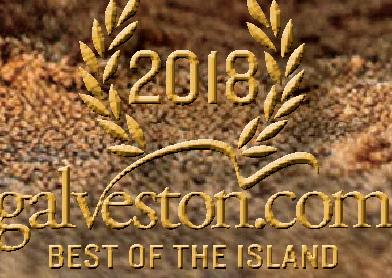
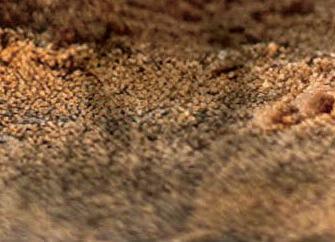


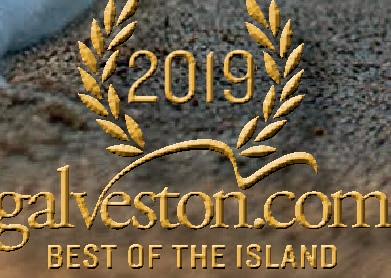
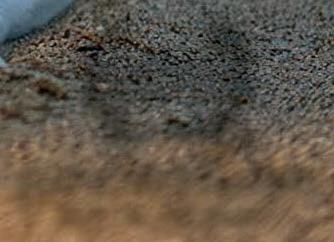







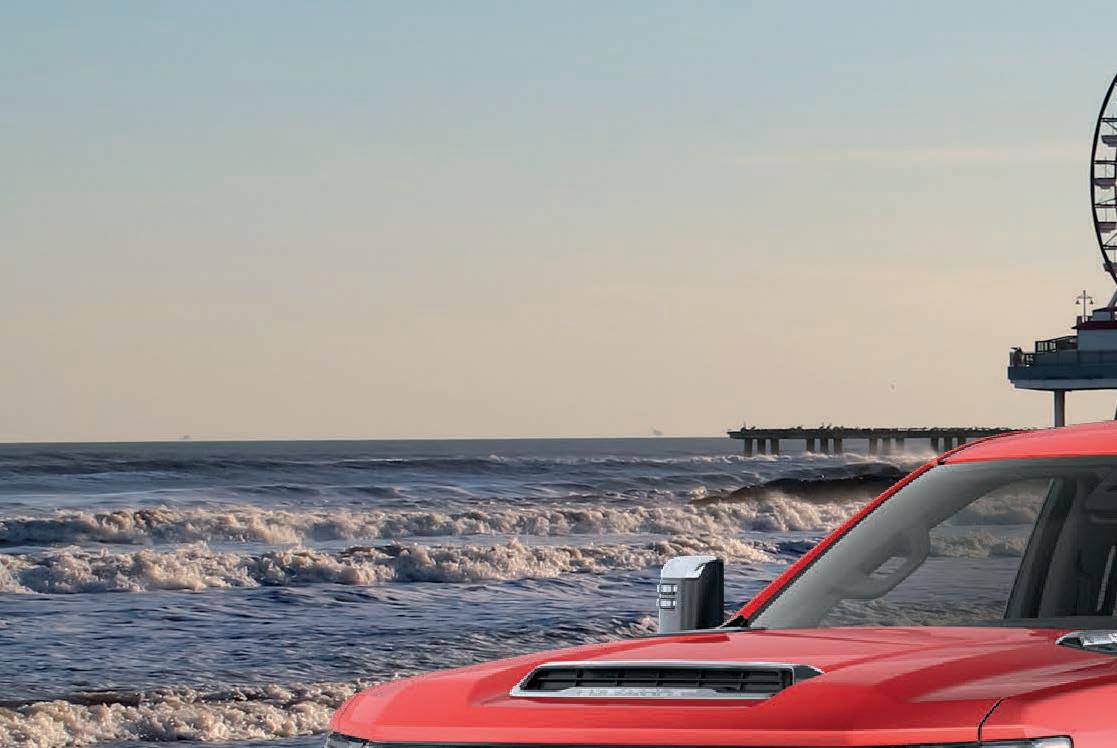











































































































































































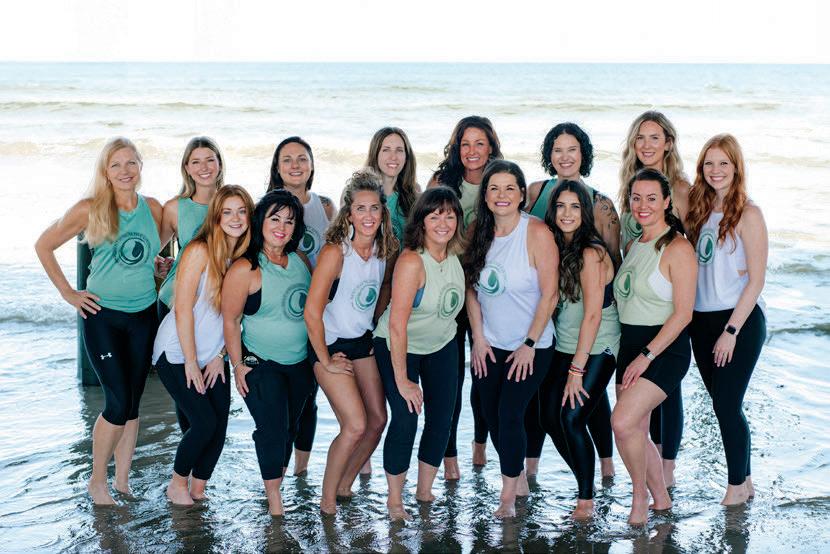


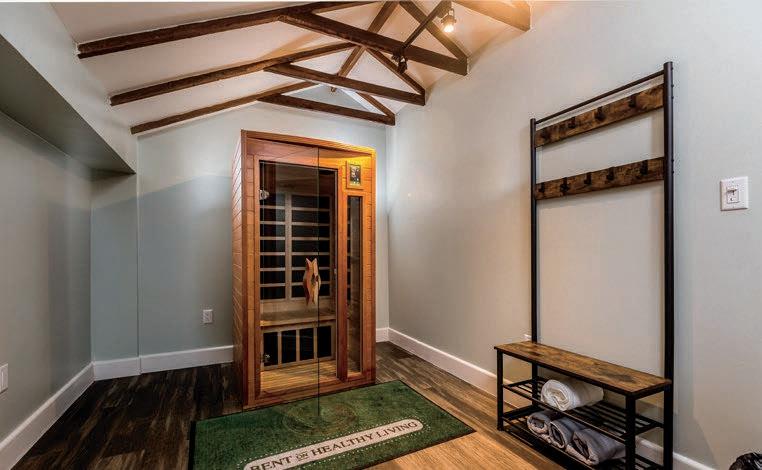






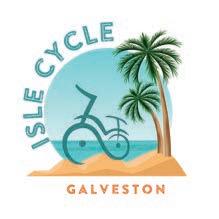
























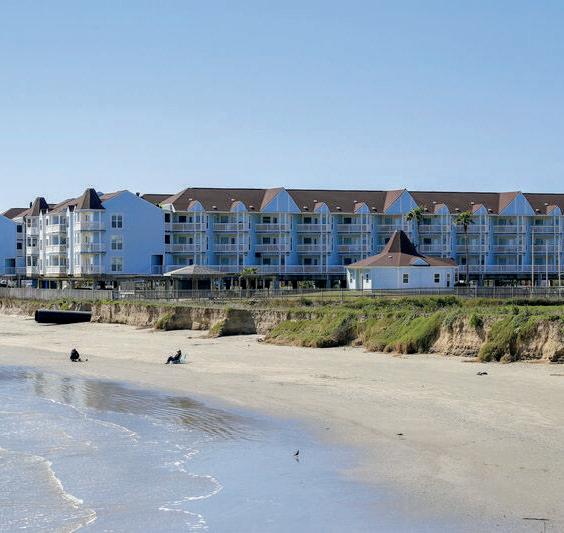

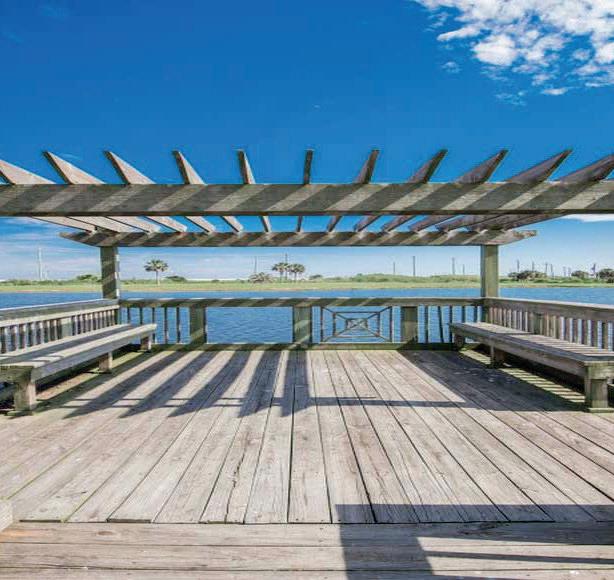


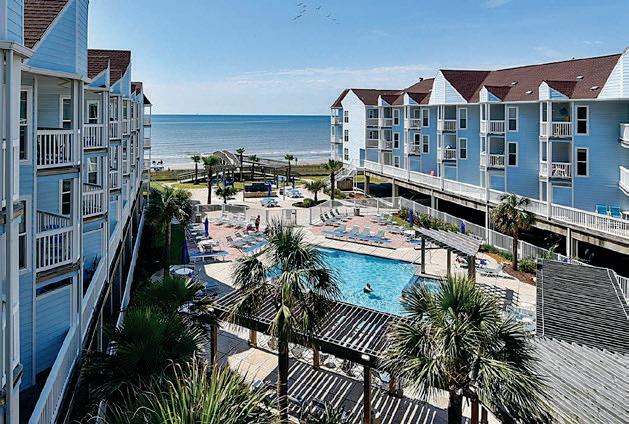



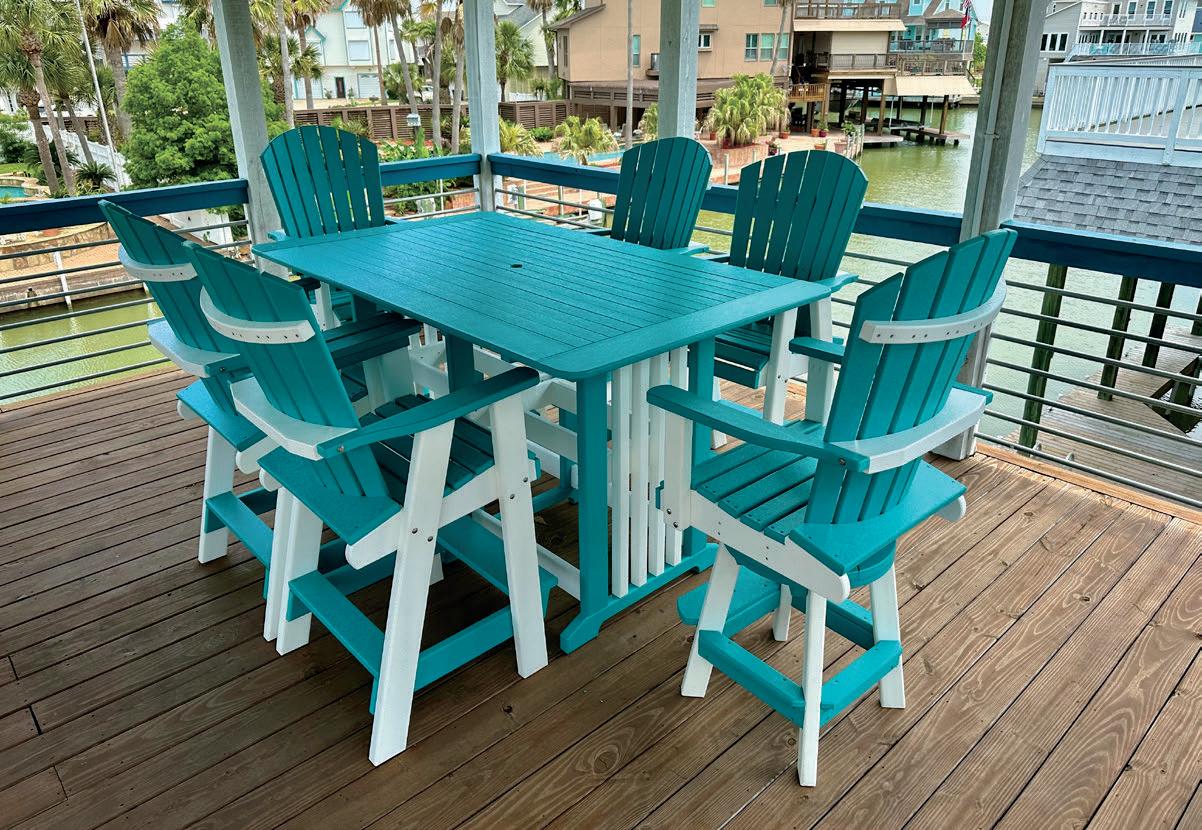
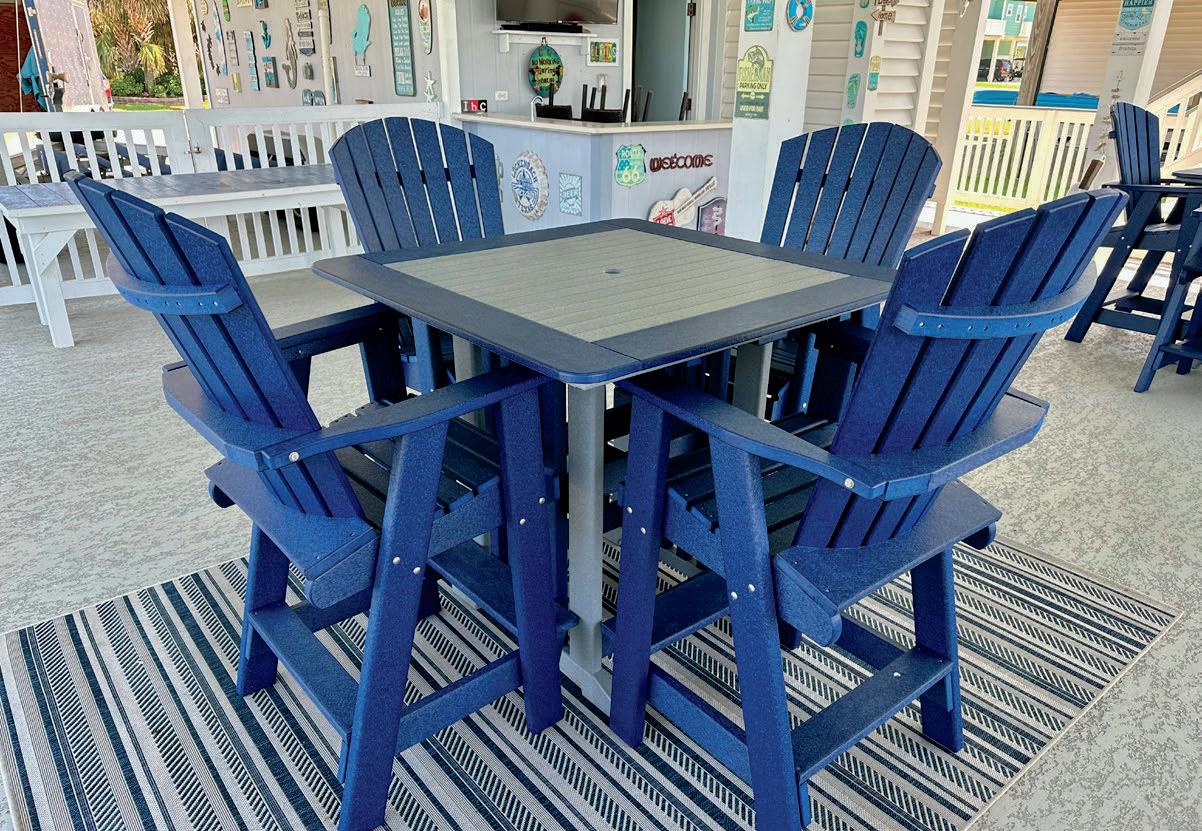






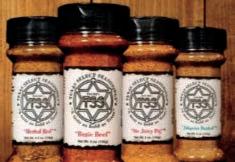





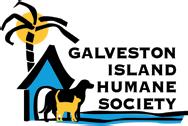
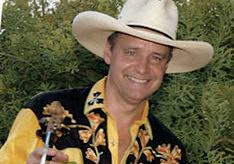
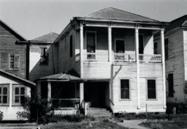














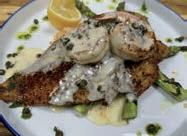

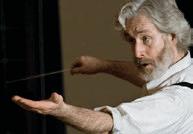











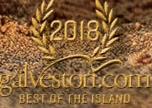
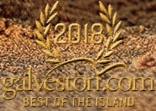
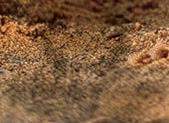

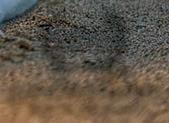











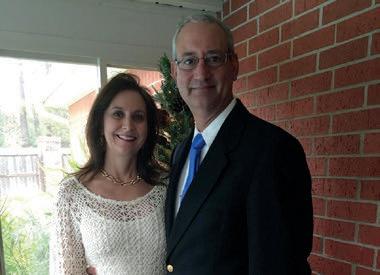


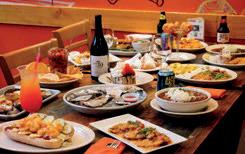




















,
Publisher
Director
Tiffany Bergeron tbergeron@wavesgalveston.com
Executive
Contributors
Richard Henderson, D.V.M.
J.A.
Jan
Billy
Chris
Max
Paul
James
Subscriptions




































































































































































































































































































































,
Publisher
Director
Tiffany Bergeron tbergeron@wavesgalveston.com
Executive
Contributors
Richard Henderson, D.V.M.
J.A.
Jan
Billy
Chris
Max
Paul
James
Subscriptions



Happy March, Wavers!



It’s time to gear up for St. Patrick’s Day! One of my favorite childhood memories is watching my dad celebrate this festive occasion. Seeing him revel in the day was a joy that I will always cherish. My dad was the quintessential workaholic—if you looked up the term, you’d probably find his picture there. He rarely took a day off, even though he owned the company and had the freedom to do so.

However, St. Patrick’s Day was the one exception he made, and he fully embraced it! He would proudly wear green clothes and sport a big, goofy green hat. With his grandparents hailing from Dublin and Galway, Ireland, this celebration held deep significance for him. He always took off work on










March 17th and 18th, and as I’ve grown older, I’ve understood that the 18th was his well-deserved recovery day LOL.
Don’t forget, Daylight Saving Time kicks off on March 9th! More sunshine means more opportunities for us to get out, enjoy life, and support our local businesses. They truly deserve our unwavering support. Let’s make it a point to buy local!
































For a young person, acquiring their first exotic pet is an exciting experience. Many kids develop a love for animals at an early age and start asking their parents if they can own a nontraditional animal like a bird or reptile. I remember hounding my parents from an early age asking if I could buy my first snake.
Before a child should be allowed to take on a snake, lizard or other similar creature there is some groundwork that must be mastered before any animal comes into the home. First and foremost, the child must spend weeks researching the species of animal they are interested in. There are so many credible resources online that provide necessary information about diet, housing, care, animal’s adult size and lighting requirements. All of this information is so important to keep the new pet happy and healthy.
A child who readily accepts and commits to learning before buying may be ready for this pet. The child must understand this animal deserves superb care and this may be a long-term commitment. Checking for a clean habitat and fresh water are part of everyday care. Some exotic reptiles and amphibians live well over twenty years.
For this article I’ve chosen three different species a novice can learn to care for and be successful. These three species are readily available at reptile shows, are affordable, and are hardy. Reptile shows usually sell captive-born individuals and the sellers can provide valuable advice about proper care, diet, and housing for the new pet. Avoid buying wild-caught animals whenever possible. They are often unhealthy and removing animals from the wild is ecologically irresponsible and just wrong.

These big green guys are docile, charismatic, and easy to care for. They are tolerant of handling and are quite tame. They are tropical frogs and enjoy warmth and higher humidity. They thrive in a large glass enclosure, a minimum of twenty gallons. The ideal temperature is 75 to 80 degrees with a light set for 12-hour darkto-light cycles. The floor of the enclosure should consist of coconut


fiber or clean soil. Roaches and earthworms can be harvested from pesticide-free gardens. The frogs are fed two to three times weekly. Their diet consists of mostly crickets with some grasshoppers and roaches.
As far as snakes go this species is great for beginners. Before undertaking snake ownership, it is important to know they are exclusive carnivores that must be fed whole prey. This means either frozen mice or rats that are purchased from sources, stored frozen, thawed, and warmed before feeding. They will not eat processed or raw meat.
As pythons go ball pythons are usually docile and only reach about five feet in length at adulthood. They are calm and easy to handle. They would do well in a twenty-gallon enclosure but as they grow may need up to a forty-gallon tank. They do not require special lighting but they need places to hide in their house. They will spend much of the time hidden becoming more active at night. Ball pythons are very



available at reptile shows, and they are all captive-bred. There are many color “morphs” selected for incredible color patterns from years of captive breeding. They are a great starter species if a snake is the choice for the first exotic pet.
Blue-tongued skink
This lizard is one of my personal favorites because I’ve taken care of my own for over two decades. In fact, my own “Blue Tongue” is now twenty-three years old and still going strong. He has met hundreds of kids in my vet office. When school groups are in for tours of the veterinary hospital Mr. Blue Tongue comes to work with me and is so gentle he allows kids he has never met before to handle him without worry.
Blue-tongued skinks are omnivores feeding on worms, insects, fruit, and some greens. They should be fed two to three times weekly. They require a spacious, warm enclosure and must be exposed to U/V light to remain healthy. They are not shy about showing off their bright blue tongues when investigating their surroundings.



They are sturdy-bodied, calm, and obviously long-lived if cared for properly. They are available at some reptile shows and pet shops but not as commonly as the ball pythons.
The best advice I can give before taking on an exotic pet: look before you leap. Read, plan, study, meet one of the species you are interested in, and know all the requirements the animal needs before purchase. Strive for perfect care, diet, and housing. Expect this pet to become a long-term family commitment. Only purchase captive-born reptiles! Unless all of this can be accomplished, it would be best to move on and keep loving your dog.

Galveston Veterinary Clinic 2108 61st Street Galveston, TX 77551












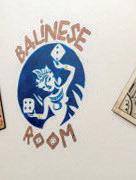








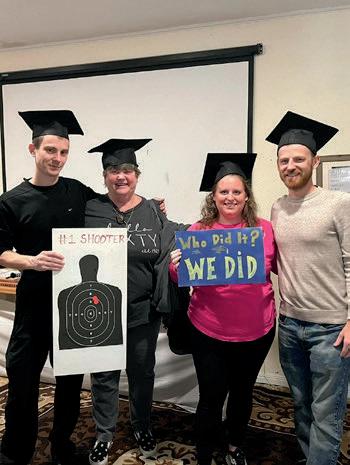


























































































































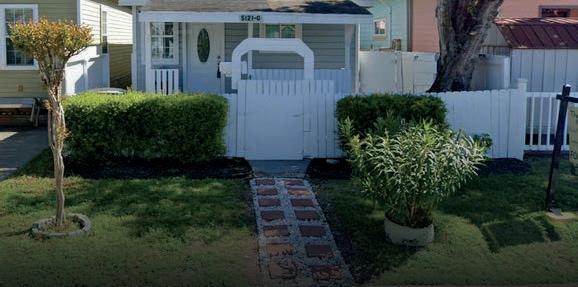






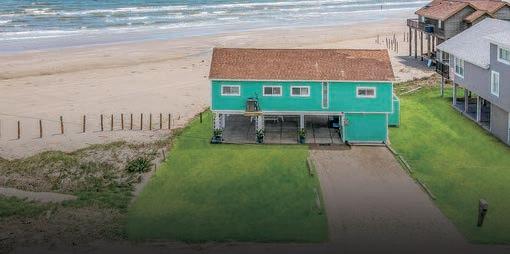
















































Hi Jan & Dean. My husband Dave is driving me crazy. All he does is spend, spend, spend money. If it’s something he wants, he buys it. He doesn’t discuss it with me, he just goes and does it. We are both 35 years old with no plans to have children.
Dave has many expensive hobbies. Golfing and fishing just to name a few of them. He is always buying the newest fishing rods or golf clubs. I will admit that he makes a very nice living, and we never want for anything. I drive a very nice car and have some beautiful jewelry and clothing. Shoes are a passion of mine. These are things I feel like I need and deserve. I also have a part-time job I work at from time to time.
I don’t like Dave just buying anything he wants. There is never any discussion between the two of us regarding his spending habits. How do I get this under control Jan & Dean?
Hannah Has Had It


Hi Hannah. It seems to me like you are doing pretty well for y ourself. I know many ladies that would be excited to change places with you. It sounds to me that you have a successful man who likes to unwind and enjoy himself from time to time. There is nothing wrong with that.

ASK


Jan is right. Many ladies would love to be in your situation. How about trying to show some appreciation towards what seems like a good man? You obviously don’t want for anything.
I am going to offer you a simple solution to all of this. A respected accountant friend of mine provided me with this information several years ago. Here is what you need to do:


My opinion is that if all your bills are being paid on time and you are putting away a reasonable amount of money each month for savings and retirement, what Dave spends on himself is okay. It almost seems to me that it is more about you being in control of everything rather than it being about your husband’s spending. Chill, relax and enjoy yourselves.


Hi Hannah. I really want to go off on a rant here, but I am going to control myself. Well, a little bit, anyway. What exactly is wrong with you?
So, you don’t like your husband buying fishing rods? How many pairs of shoes are in your closet? I am guessing way more than a pair. Do you go around with your eyes closed all the time because you can’t stand to see your husband happy?
Have six bank accounts. That’s right, I said six. Have an account for each of you that is for paying bills each month. You both agree as to the amount of dollars each will contribute to it every month. The next two accounts are for savings. You both reach an agreement on how much you will contribute to these two accounts each month. Stick to the plan and do it.
Here is the fun one. Your 5th and 6th accounts. These are called the “it’s none of your business” accounts. After you have contributed to the first four accounts each month, the dollar amounts you both have left over go into these accounts. It is money you both spend any way you want to and it’s no one’s business what you do with it or what you spend it on.
There you go, Hannah. Problem solved. Say thank you, Dean.














































































































































Shaye Henderson, BSN, M.Ed., M.S., Instructor at Bent On Healthy Living Wellness Center, 2910 53rd Street, Galveston




March is the season of growth. The trees bud out, the grass grows and needs mowing again, and the flowers open up and show us their beautiful colors. So, it’s a good time to discuss how we can join the party and grow as humans.
This simple equation makes you better at everything.
Brad Stulberg and Steve Magness, in their book, “Peak Performance: Elevate Your Game, Avoid Burnout, and Thrive with the New Science of Success,” coined the equation, ”Stress + Rest = Growth.” Their premise is that studies show both the body and the brain respond to stress by becoming stronger — so long as the period of stress is followed by adequate rest and recovery.
Whether you want to grow your body or mind or improve a specific skill, you need to push yourself to the outer limits of your current ability and follow that hard work with appropriate recovery and reflection.


We hear it everywhere: “Stress is killing us bit by bit.” Stress makes us too fat or too thin. Stress makes us sad, anxious, depressed, or angry. Stress keeps us awake at night and sleepy during the day. Stress has been linked to fibromyalgia, autoimmune diseases of every kind, increased blood pressure, and decreased libido. It turns out, though, that the right type of stress, in the right amounts, for the right amount of time can help improve symptoms of every single condition mentioned above.

Stulberg and Magness learned that the world’s best performers follow a common pathway to continual growth. They take on challenges, make themselves uncomfortable (stress), and then follow those challenges with recovery and reflection (rest). Then, they rinse and repeat, with a slightly more significant challenge. Too much stress, not enough rest, and the result is injury, illness, or burnout. Not enough stress, too much rest, and the result is complacency. The authors reference a study by Mihaly Csikszentmihalyi, Ph.D., who spent 50 years collecting interviews from intellectual and creative geniuses across many disciplines and found that, much like successful athletes, all top performers, regardless of field, followed essentially the same process:

• Immersion: Complete focus and engagement. (Stress)
• Incubation: A period of rest where they are not thinking about their work. (Rest)
• Insight: The emergence of new insights or ideas following their period of rest. (Growth)
Whether it is physical, intellectual, or emotional growth, research suggests that if we wish to get better at anything, we need to stress ourselves, pushing beyond our current limits. This isn’t to say you should crush yourself in the gym, suddenly take on an insane number of projects at work, or go from zero practice on a skill to practicing for hours a day. But it does mean that you should actively seek out “just-manageable challenges.” Activities where you deliberately push yourself ever so slightly outside of your comfort zone.

Pushing too hard too often — stress without rest — doesn’t lead to growth. It leads to fatigue and burnout. It’s not just athletes, either. Groundbreaking ideas hardly ever occur when one is at the chalkboard, but rather, they happen when one is taking a break by exercising or daydreaming. It can take guts to do, but there is real magic in stepping away. Though it may seem paradoxical, after a certain point, it’s not hard work that is the key to improvement. It’s rest. Only when we step away — nothing more powerful than when we sleep — can our bodies and brains rebuild and strengthen.
For our bodies, it is during rest that hormones are released, making us more resilient to future challenges. For our minds, it is during daydreaming, mind-wandering, and relaxation that our subconscious can kick in, helping us generate “aha” moments of insight. And it’s during sleep that our brains process, consolidate, connect, and store all the information we were exposed to during the day. So many people make the mistake of cutting sleep to do more work when sleep is one of the most productive things you can do. Period.
• Pick an area of your life.
• Reflect on where you currently are and where you want to be.
• Consider whether you ought to be in a state of stress—taking on just-manageable challenges—or in a state of rest, recovery, and reflection.
• Align your behavior accordingly.
• Check in every few weeks and evaluate your progress like any other training program.
So, let’s return to the essence of this article and sum up: Stress is good if it’s followed by appropriate rest. When you consciously apply cycles of stress and rest, you can grow in amazing ways. People often say, “Life is a marathon, not a sprint,” but few people actually live that way.

Grow
Stulberg and Magness say, “Take a moment to reflect on your goals. These can be professional, creative, athletic, or even related to growing in relationships. Then ask yourself, are you following a trajectory of stress + rest = growth? Finding the right balance of stress and rest in your pursuits is perhaps the most promising — and just as important, sustainable — way to improve and grow.”

It’s time we started applying these basic principles to our lives so we can grow to be our best. The growing season is here and ready for you to shine!


































































































































































































































































































































































































































































































































Dedicated to promoting animal welfare and the protection and prevention of unwanted or homeless animals of Galveston Island.

Fostering Saves Lives. For a weekend or until adoption, give a shelter animal time out of a cage in a home. You could be instrumental in finding that animals new home. From old dogs to bottle baby kittens our foster program is vital to our success.
Fostering Saves Lives. For a weekend or until adoption, give a shelter animal time out of a cage in a home. You could be instrumental in finding that animals new home.
From old dogs to bottle baby kittens our foster program is vital to our success.
Volunteers are the backbone of GIHS. Assisting with many tasks at the shelter and off-site events! Sign up today to help advocate for adoptable animals, take a dog for a walk, socialize kittens, or one of any other volunteer tasks that make our mission possible.
Volunteers are the backbone of GIHS. Assisting with many tasks at the shelter and at off-site events! Sign up today to help advocate for adoptable animals, take a dog for a walk, socialize kittens or one of the many other volunteer tasks that make our mission possible.
Whether in support of one of our designated programs or as a general contribution every dollar supports our mission and it is tax-deductible. We do have an Amazon wish list as well, you can literally give a dog a bone.
Whether in support of one of our designated programs or as a general contribution every dollar supports our mission and it is tax deductible. We do have an Amazon wish list as well, you can literally give a dog a bone.
Safe housing and care for resident pets including animal health and behavior assessments
Safe housing and care for resident pets including animal health and behavior assessments. Routine health care including immunizations, worming, and treatment for minor injuries. Rabies observations for bite cases. Partnering with other organizations to take in animals as needed. Coordinating transport for out-of-state placements.
Routine health care including immunizations, worming, and treatment for minor injuries
Rabies observations for bite cases
Partnering with other organizations to take in animals as needed
Coordinating transport for out of state placements.
ADDITIONAL PROGRAMS:

CONNECT WITH US

• Spay/neuter assistance
Spay / neuter assistance
“Big Fix”
GIHS is dedicated to ensuring ALL pets are spayed or neutered to decrease the number of homeless and unwanted pets as well as the number of pets entering the shelter. Through generous grant funding, we offer spay/neuter assistance programs at low to no cost for those in need. Contact the shelter for information about the “Big Fix!”
The Galveston Island Humane Society INC., formed in 1981 as a 501C3, non-profit organization. Originally created by concerned citizens to rescue animals from “the pound” and much has changed over the last few decades. Today we have a humane shelter with a no-kill live release rate. Daily we provide care for lost or homeles s pets, reuniting pets with their families and promoting the adoption of pets needing homes.
The Galveston Island Humane Society, Inc., formed in 1981, is a 501c3, non-profit organization. Originally created by concerned citizens to rescue animals from “the pound,” much has changed. Today we have a humane shelter, providing care for lost or homeless pets, reuniting pets with families, and promoting the adoptions of pets needing homes.
• Lost pet assistance and recovery
Lost pet assistance and recovery
Humane education for all ages
• Humane education for all ages
Pet food pantry for individuals in need
• Pet food pantry for individuals in need
Emergency Medical Assistance
• Emergency Medical Assistance
WHAT DO ADOPTIONS INCLUDE AT GIHS?
All adopted pets are spayed / neutered as required by Texas law.
• All adopted pets are spayed/neutered as required by Texas law.
Vaccinations including rabies, as well as Flea and Heartworm prevention are all current when pet is adopted
Microchip
• Vaccinations including rabies, as well as Flea and - Heartworm prevention, are all current when the pet is adopted.
• Microchip.

GIHS is de dicated to ensuring ALL pets are spayed or neutered to decrease the number of homeless and unwanted pets as well as the number of pets entering the shelter. Through generous grant funding we offer spay/neuter assistance programs at low to no cost for those in need. Contact the shelter for information about the "Big Fix!"
GICC was established in 2015 and is a progressive Trap/Neuter/Return (TNR) program to fix, vaccinate and release feral cats on the island. To date, we have altered over 4000 felines with this program. The success of this program has reduced yearly intake at GIHS and has improved our live release rate in cats from 52% in 2014 to 94% in 2024.
• Microchip your pets.
• Spay or neuter your pets.
GICC was established in 2015 and is a progressive Trap/Neuter/Return (TNR) program to fi x, vaccinate and release feral cats on the island. To date we have altered over 4000 felines with this program.
As an “open admission” shelter for Galveston Island we accept all homeless pets even when the shelter is full. In a city with a high number of homeless pets, this could easily lead to needless euthanasia. Our programs work diligently to reduce the number of pets in our community. We are committed to assuring that ad optable pets are kept available until they are placed in a family or transferred to a partner organization.
As an “open admission” shelter for Galveston Island, we accept all homeless pets, even when the shelter is full. In a city with a high number of homeless pets, which could lead to needless euthanasia, our programs work diligently to reduce the number of pets in our community.
Our shelter is managed by a board of directors caring staff and active volunteers who work to provide for the pets in our care along with creating and managing community programs that will positively impact our shelter. We hope you will join us in our mission to make sure that every pet on Galveston Is land can live out his or her life in a loving home.
• Like and share from our social networks.
• Become a member of GIHS.
Microchip your pets
Spay or neuter your pets and encourage others to do the same
The success of this program has reduced yearly intake at GIHS and has improved our live release rate in cats from 52% in 2014 to 94%in 2024
• ADOPT your next best friend.
• VOLUNTEER at the shelter.
• FOSTER if you cannot adopt.
• DONATE to support our mission.
Like and share from our social
Become a member of GIHS
ADOPT your next best fr iend VOLUNTEER at the shelter
We are committed to assuring that adoptable pets are kept available until they are placed in a family or transferred to a partner organization. Our shelter is managed by a board of directors, caring staff, and active volunteers who work to provide for the pets in our care along with creating and managing community programs that will positively impact our shelter. We hope you will join us in our mission to make sure that every pet on Galveston Island can live out his or her life in a loving home.
FOSTER if you cannot adopt
DONATE to support our mission










Elsa is a 2-year-old border collie mix with a heart of gold. She has a sweet and gentle personality, making her great with kids and sure to bring joy to families. Active individuals will love her energy, as she enjoys beach walks and fun runs. Elsa also gets along well with other dogs and loves car rides, where she showers her companions with affection. Despite being at the shelter for over 200 days, Elsa remains hopeful and is yearning for a new forever or foster home where she can share her love and excitement for life with her new family.
The Galveston Island Humane Society is always in need of volunteers, fosters, and adopters. By spending time with the shelter dogs, you can help them socialize and also promote their adoption. Becoming a foster parent or adopting a dog like Elsa can give them the mental and emotional break they need from shelter life. If you’re interested in fostering, please visit www.galvestonhumane.org/foster.



























Bob Rohan, or as he is known in Texas “Bad Bob”, has been playing the fiddle and singing in various groups for over 30 years in Texas, and has opened for Merle Haggard, Willie Nelson, Charlie Daniels, Carlene Carter and John Conley to name a few. Bob has played in bands that have backed up country legends like Hank Thompson, Ray Price, Jack Greene, Pam Tillis, and Dale Watson.

Along with songwriting, Bob is also a talented cartoonist and has a self syndicated comic strip titled “Buffalo Gals”. The comic feature is about two cowgirls “Bess Winchester” and “Connie Cheyenne”. The comic strip was inspired after playing with “The Hays County Gals and Pals” a cowgirl western group that toured through Texas, Oklahoma and as far west as Elko, Nevada. Bob has won The Wisconsin State Fiddle Championship and has been nominated several times from The Academy of Western Artists for Best Cowboy Cartoonist.
www.badbobrohan.com








Quality
Ample



Happy March Wavers! I hope this year is bringing you many good things. This month we’re taking a look in the rearview mirror at the history of Galveston. Who were the first people on the island? Were there any wars fought on the island? Do any of the original houses built on the island still stand today? So let’s get started and see what fun facts we can find!


According to the Texas Parks and Wildlife Department, the nomadic Akokisa Tribe were the first people to winter on Galveston Island. Most of what is known about the Akokisas comes from old mission records. The Akokisa people lived in villages and built open-air structures to cope with the warm coastal climate. Their homes were shaped like beehives and thatched with various grasses or palmetto leaves. A hearth would be located in the center of the floor with a smokehole in the ceiling. During summer months, an Akokisa would sleep on a raised platform covered by a thatched roof and open sides. Beds were made of straw and covered with different animal skins. These Akokisa people and their descendants survived on Galveston Island’s game, fish, wild plants, and shellfish. They left behind bones, trading items, and ceramics. These natives left behind very few lasting artifacts on the island, so historians have used European written accounts to learn about early life on the upper Texas coast.
had moved off the island because of sickness and famine. Adaptive tribes, such as the Karankawa, survived for another half century on the edges of early white society. Eventually, disease and these outsiders also forced the Karankawa tribe off the island.
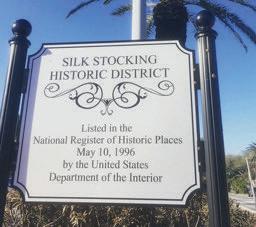
The Silk Stocking Historic District was created in 1975, with 25th Street, or Rosenberg, as the main thoroughfare. The neighborhood is one of the most intact residential areas in the city from the late 19th and early 20th century. It is also a National Register Historic District.
Fun Fact: The name of the district refers to the wealth of the e arly residents who could afford to buy silk stockings.
The Silk Stocking District was originally developed in the early 1870s as a mix of single-family h ouses, a small corner store, large vacant blocks, and industrial sites. It was also home to the Ursuline Academy between Avenue N and Avenue O. The Ursuline Academy was built between 1881 and 1885. The building was designed by prominent Galveston architect Nicholas Clayton. The Ursuline Academy was the first Catholic school for girls in the state and was a place of refuge during the storm of 1900. Until the 1890s, the core of the Silk Stocking District was occupied by the Texas Cotton Press. After the Texas Press went bankrupt and was demolished, the area was subdivided and the lots sold at auction in 1898.


Spanish explorer Cabeza de Vaca and his crew shipwrecked near here in 1520, leaving behind detailed journals describing these native people. Europeans began regularly exploring and settling the upper Texas coast in the 1700s. These Spanish and French travelers brought trade and new cultures, but it was disease that quickly overwhelmed and disrupted the lives of the Akokisan people. By the 1830s, they
One of Galveston's most recently designated local historic districts is The Lost Bayou Historic District. The name of the district refers to Hitchcock's Bayou which was 'lost' when it was filled in the 1880's. It was named one of the significant historic districts on the island according to the National Register of Historic Places. It was originally designated in 1994 but was expanded to include an additional non-contiguous block in 2004. The district extends from 16th to 21st Street between Broadway and N 1/2. It is comprised of approximately 23 blocks south of Broadway Boulevard. Much of the area between the Gulf and Avenue L and between 20th and 23rd Street was covered by a body of water known as Hitchcock's Bayou. Before the grade raising of the island after the 1900 storm, many homes and businesses were built around Hitchcock's Bayou. This neighborhood sits where a small bayou or lake connected to the Gulf once sat. The Lost Bayou was laid out in a consistent pattern of square blocks with alleys. Most houses face the east-west avenues, although some houses on each block face the numbered north-south streets. The rest of the island had low elevation, and had many small bayous and inlets of water on both the bay and the beach sides, stretching across the island. Hitchcock's Bayou became lost, once the grade raising of the island was complete. The elevation of the inhabited part of the island had been increased. Once this body of water had been filled in, more lots were available for the neighborhood to expand. The elevation of the inhabited part of the island had increased, and the Bayou was filled with dredge mud. The Lost Bayou neighborhood was built on top of the old water source.

Fun Fact: Throughout the 1850s, Galveston was home to military service camels. The U.S. Camel Corps housed the beast of burden along Hitchcocks Bayou near modern-day 23rd Street, and Avenue M. Camels were used in the American West as they were acclimated to desert climates. The camels didn’t have to eat or drink often; however, their temperament and smell led to the project's failure for the United States military. Hitchcock's Bayou was filled in to make room for more construction. The camels were replaced with more practical creatures such as horses.

In 1988, the Strand/Mechanic Historic District became Galveston's first locally designated commercial historic district. The approximately 13-block district encompasses Galveston's primary commercial area from the 1850s through the early 1900s. The Strand runs from 20th to 25th Street. Beginning in the 1830s, due to Galveston's enormous vessel traffic, between 700 and 1400 vessels used the port every year. The Strand became a popular place for significant businesses to set up shop, wholesalers, cotton agents, paint, drug, grocery, dry goods, insurance companies, commission merchants, cotton brokers, attorneys, and before the Civil War, even slave auctioneers. During the Civil War, when the Union forces blockaded Galveston, many businesses on the Strand closed up shop and moved to Houston for the war. The land portion of the battle of Galveston was fought around Twentieth Street, on and around Kuhn's Wharf. The Confederate forces on the island fought from the Strand at the Hendley building and the immediate surrounding area. The Civil War made its mark on Galveston. In 1862, Union troops took control of Galveston Island, and the Confederate soldiers attempting to hold the island evacuated.

In 1863, the Confederate Army mounted an attack by land and sea via cotton-clad warships and cannons installed in merchant buildings. The surprise attack was successful, and Galveston was under Confederate control.
A few buildings in the district date back to the mid-1850s. Most buildings were built between 1875 and 1899 when it was a prosperous business area adjacent to the wharves. Galveston's premier architect, Nicholas Clayton, designed fifteen commercial structures on the Strand. Eight of them still stand. It is also listed on the National Register of Historic Places as a National Historic Landmark. National Historic Landmarks are nationally significant historic places designated by the Secretary of the Interior because they possess exceptional value or quality in illustrating or interpreting the heritage of the United States.
Often referred to as "the Wall Street of the Southwest," the Strand/Mechanic area was the economic lifeblood of this 19th-century port city. Businesses in the district supported and managed the heavy traffic with banks, warehouses, and merchants controlling the goods coming into and leaving the city. Cotton was the major export but building materials, produce and other dry goods also flowed through the district.
Now its Gothic, High Victorian, and French buildings are home to shops, restaurants, offices, and apartments. Projects within the district are reviewed by the citywide Landmark Commission. The Strand is one of Galveston's popular tourist destinations.
Fun Fact: As the Civil War ended on June 19th, 1865, the southwest corner of 22nd Street a nd The Strand was the location of the Union Army's declaration of General Order Number 3, which officially freed all enslaved people in the state of Texas. This historical event is known
as Juneteenth and is now a national holiday in the United States.

Located directly adjacent to downtown was Galveston's first residential neighborhood. It became Galveston's first locally designated historic district in 1971.
The original 40-block historic district was expanded to the east and north in 1994. It is also listed on the National Register of Historic Places as a National Historic Landmark.


The densely populated East End suffered significant damage in the Great Fire of 1885, with houses destroyed from 16th to 20th streets and from the Strand past Broadway. The tight grid pattern of lots and the existence of multiple alley residences made fighting the fire difficult within the neighborhood. Rebuilding was swift, with entire blocks rebuilt in 1886. This provided ample opportunity for local architects such as Nicholas Clayton, Alfred Muller, and George Stowe to design elegant Victorian residences throughout the district. Many refer to this era as Galveston's "Gilded Age."
Fun Fact: The Bishop's Palace, also known as G resham's Castle, is an ornate 19,082 square feet Victorian-style house, located on Broadway and 14th Street in the East End Historic District.
The details of other homes built before 1900 were b uilt with ornate carvings, a splash of stained glass in a window, welcoming porches, or wrought iron fencing. The architecture of the East End Historical District reflects a variety of styles and periods, the earliest being examples of the Greek Revival style built during the 1850s.
Early residents represented an economic and social cross-section of the community. The buildings ranged from small simple cottages to large elaborate houses and castles. The rugged old homes, having withstood the test of time and the elements, now flaunting their age following a bit of paint and skilled carpentry.
In recent years this area has turned from a bleak

pattern of decay into a thriving, livable neighborhood enjoying tourism and desirability.
Besides the beautiful homes, its residents enjoy a cultural and ethnic melting pot, several fine schools, many restaurants, and close proximity to the University of Texas Medical Branch and the downtown Historic District.
Fun Fact: This District boasts the majority of G alveston's tree sculptures!
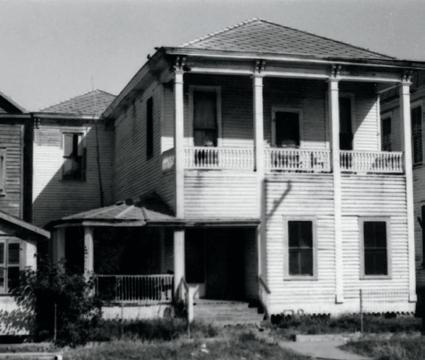

pied mansions that could be utilized as discreet places of business. Neither law enforcement nor war could stop the practice of prostitution in this area. It officially became Galveston's Red Light District. From the reconstruction era to the 1960s, there were quite a few houses of ill repute. The Port Of Galveston is only a few blocks away and sailors from around the world may have just found themselves in this area looking for a companion for the evening.
Prostitution was tolerated and accepted in Port Of Galveston society... with a license, of course. The history of Galveston's Red Light District brings to mind the socio-economic factors that allowed prostitution, gambling, and alcohol during prohibition to thrive not only in Galveston's Red Light District but all over the island. A few houses around what was called "The Line" still stand today.
Fun Fact: "The Line" referred to the rows of buildings that were open for business as brothe ls and eventually extended eight blocks west of 25th Street along Post Office Street.

The roots of Pirates Cove and its neighboring community, Laffites Cove, can be traced back to the visionary West Galveston real estate developer George Mitchell. George Mitchell laid the foundation for Pirates Cove in the 1970s, and subsequently, in the 1990s, he extended his vision to create Laffites Cove. These planned communities on the Galveston Bay side of Stewart Road, between 11 Mile Road and 13 Mile Road, have since flourished into vibrant coastal neighborhoods.

Galveston isn't known as the Sin City of the South just for gambling or Galveston's prohibition era. Galveston has a long documented history of prostitution in the Red Light District. There's no doubt that prostitution in Galveston dates back to before the city was founded, but the Red Light District as we know it today began during the Civil War when the Union Navy occupied the city of Galveston. Although the Union only maintained control of Galveston for three months, Post Office Street and Market Street, within a few block radius of 25th St., then known as Bath Avenue, was transformed into an area where cash-rich Union soldiers could find a lady to meet their needs. Women who worked in the brothels ranged from entrepreneurial-minded women to immigrants looking to make money based on the high demand. They often faced exploitation and abuse at the hands of their pimps, madames, and customers. Madam Mary “Gouch-Eye” Russel who ran a bordello for over two decades partnered with the mayor whenever he needed a special girl for a visiting big-shot. His gratitude was repaid when she would be tipped off to law enforcement house raids, which were mostly for show. Madam Mary believed bordellos served johns and kept prostitution off the streets. “They had only one thing to sell, but they knew the law of supply and demand; as far as they were concerned, that was the only law that mattered.”
At their peak in the 1940s, some houses could earn as much as $20,000 in a week! As most of Galveston's residents evacuated during the Union occupation, there were huge multi-room, unoccu-
As the name suggests, Pirates Cove alludes to a sense of adventure and maritime history. The area's proximity to the bay and waterways gives a nod to the seafaring legacy that is deeply ingrained in Galveston's heritage.
The presence of canals, lakes, and bayous leading into Galveston Bay adds an unmistakable maritime charm to the neighborhood.

Fort Crockett, a historic area on the island between 45th and 57th Street, originated in 1897 for Harbor Defense and military training.
After the storm of 1900, the fort was rebuilt and reinforced. Troops were mainly stationed at Fort Crockett for training and maintenance until World War I. During the late 1920s to early 1930s, Fort Crockett was home to the Third Air Attack Wing. Fort Crockett was also home to gun emplacements placed and reinforced during each major conflict. You can still see the remnants of the gun and placements under the modern-day San Luis Hotel. You can also see the military barracks and administration buildings in this area.
In 1941, Galveston Island was essentially activated for World War II defense and production. Fort Crockett was heavily reinforced and expanded. German prisoners of war were interned at Fort Crockett during World War II.

Fun Fact: Following World War II, Fort Crockett served as a recreational facility for the m ilitary.

What remains today is a National Oceanographic and Atmospheric Administration facility visible while driving on the seawall or walking up to the San Luis Hotel.
The area was also home to a marine hospital to treat injured soldiers. This large building can still be seen on 45th Street and Avenue N. In conjunction, Todd Shipyard employed hundreds of people on modern-day Pelican Island. The purpose was to crank out military vessels to serve in the war. The shipyard was active until 1990. United States Navy vessels were a common sight at the Port of Galveston. The Army took over Galveston Airport and transformed it into the Galveston Army Airfield in 1943. This airfield was used for anti-submarine air patrols, aircrew training, and as a home base for bombers and fighter planes. The 46 Bombardment Group of the Army Air Corps began an anti-submarine patrol role over the Gulf of Mexico until the 10th Anti-submarine Squadron replaced it. The airfield was deactivated in November 1945. The airport remains today following World War II. Fort Crockett’s military presence in Galveston has played a vital role in the growth and survival of the island and the United States.
Fun Fact: The name was carefully chosen to e voke the feeling of a beachfront paradise, complete with the allure of a tropical getaway.


Two submarines of the United States Navy have been named USS Cavalla, after the Cavalla, a fish of the pompano family.
The first USS Cavalla (SS-244), was a Gato-class submarine, commissioned in 1944, and served until 1969. The second USS Cavalla (SSN-684), was a Sturgeon-class attack submarine commissioned in 1973 and in service until 1998.
The second USS Cavalla was called "The Luckiest Ship in the Submarine Service" because of her outstanding performance during her short time in service before the end of World War II. She logged 90,000 miles, made 570 dives, and sank 34,180 tons of Japanese shipping.
Fun Fact: Her greatest sinking during six war patrols was the Japanese aircraft carrier S hokaku which had participated in the attack on Pearl Harbor.
She was also present in Tokyo Bay in September 1945 for the surrender. The Cavalla was reclass ified an "auxiliary submarine", AGSS-244, in July 1963. Cavalla was decommissioned and struck from the Naval Register on December 30, 1969.
On 21 January 1971, the first Cavalla was transferred to the Texas Submarine Veterans of World War II. She now resides at Galveston Naval Museum in Seawolf Park on Pelican Island, just north of Galveston, Texas. Cavalla has undergone an extensive restoration process and is open for self-guided tours.
By associating the development with Jamaica, the d evelopment was created to attract residents and visitors drawn to the idea of living or vacationing in a beachfront location reminiscent of the Caribbean. Over time, the name “Jamaica Beach” has become synonymous with the natural beauty, charm, and coastal allure of the area. The site is also a former Karankawa Native burial ground. In the 1960s, the discovery of a skull connected to a Karankawa Native American led to a questioning of public awareness and the history of the site. The Karankawa people were a nomadic Indigenous tribe that inhabited the Texas Gulf Coast from Galveston Bay to Corpus Christi Bay.
Modern-day Jamaica Beach has progressed from limestone roads to hard-surfaced streets and from individual septic tanks to a modern sanitary sewer system. As of the 2020 census, the city's population was 1,078. Jamaica Beach’s journey from a weekend fishing retreat in 1956 to a fully incorporated city in 1975 is a testament to its growth and transformation. The residents of Jamaica Beach boast of its own city hall, police department, volunteer fire department, EMS services, a park, public beach access, a municipal pool, and a boat launch ramp.


Jamaica Beach has always been one of my favorite places to visit. I have very close friends who have lived there for several decades. Jamaica Beach is on Farm Road 3005 and West Bay just south of Galveston Island State Park. This coastal paradise is known for its tranquility, natural beauty, and warm hospitality. The site was developed in 1957 by Johnny Goyen and Earl Galceran of the Jamaica Corporation, as a resort subdivision with a marina. Inspired by the relaxed atmosphere and tropical allure of Jamaica, the area was christened “Jamaica Beach.”
Wow! This has been a lot of fun discovering all of these fun facts! From Hitchcock Bayou, aka the” Lost Bayou” being filled in with sand to the wartime adventures at Fort Crocket. History always gives us insight into how we arrived at today.
Until next month,
Thomas Waggoner























































































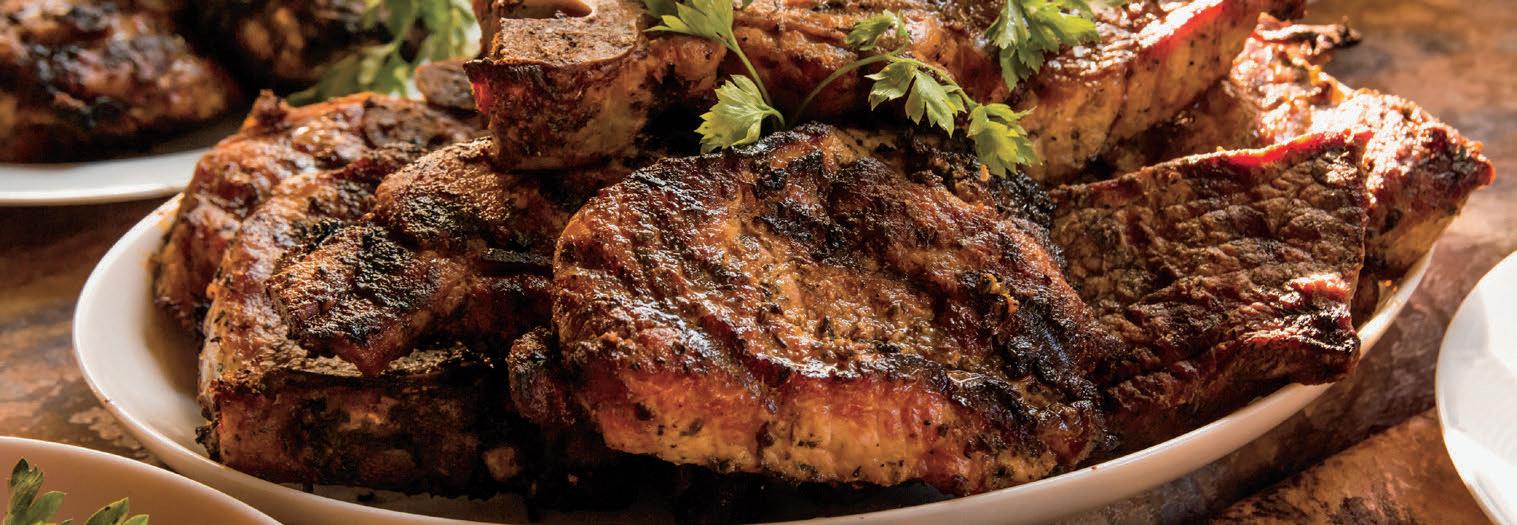






























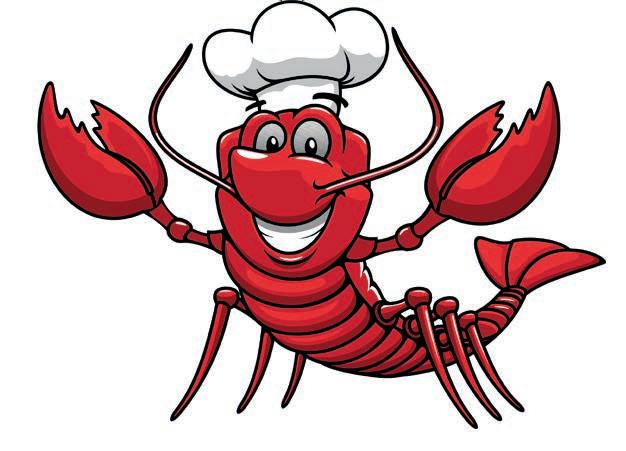
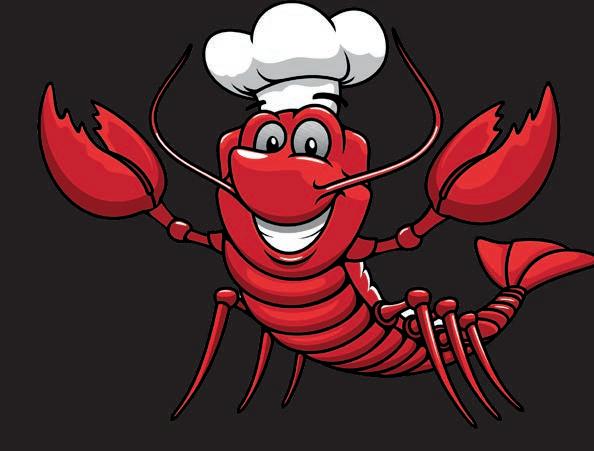


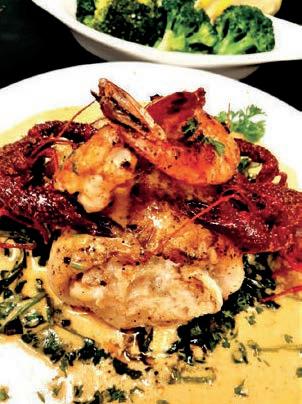









Winter Hours
Sunday - Thursday - 11am-10pm
* kitchen closes at 9pm



Meet with
grab a bite to eat, or enjoy your favorite cocktail!





Friday & Saturday - 11am - Midnight
*kitchen closes at 10pm
Welcoming Guest 21 & Up




























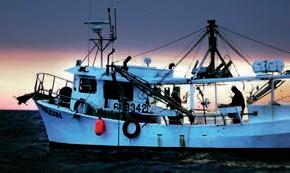









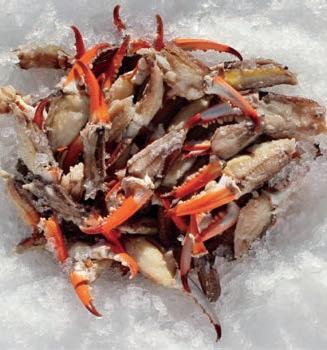








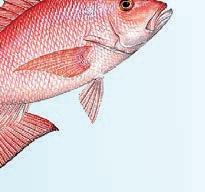










Smoked Brisket
Quality brisket covered with our original rub, slow smoked and ready to be sliced when you order.
Pork Ribs
Pork ribs cooked with our original rub till almost done then basted with our honey sweetened sauce.
Grilled Chicken
Chicken spiced with our rub cooked over wood. Unlike any chicken you have ever eaten.
Link Sausage
Pork and Beef link sausage smoked over oak ready and waiting for you to order.
Sandwiches
Chopped Beef | Sliced Beef | Sausage | Comes with a complimentary 4 oz side
Stuffed Baked Potato
Huge baked potato filled with butter, cheese, sour cream, chives and best of all chopped brisket!

Barbacoa (Sat. and Sun. Only)
Pennie Ochoa’s delicious recipe. Tender, moist shredded beef is the result.
Sides and Dessert
All sides are made fresh at Pennie’s
Potato Salad
Dill based cool refreshing chopped potatoes mixed with dressings.
Pinto Beans
My own recipe made fresh daily. Lots of love goes into the beans.
Spanish Rice
Green Beans
Cole Slaw Banana Pudding Trifle


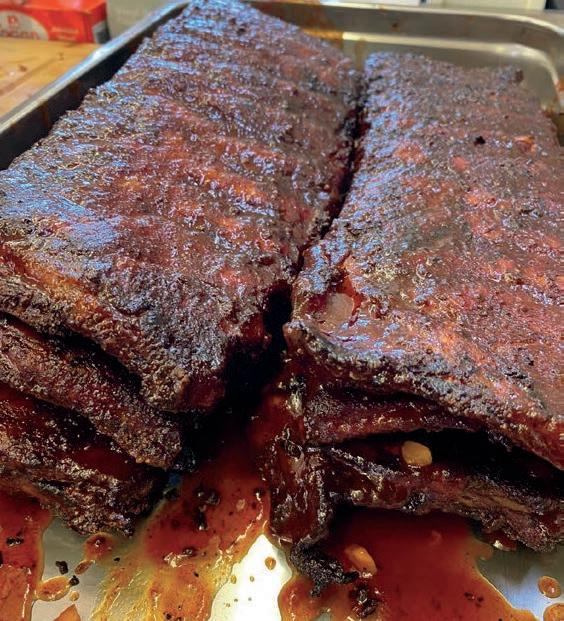


Savour




















































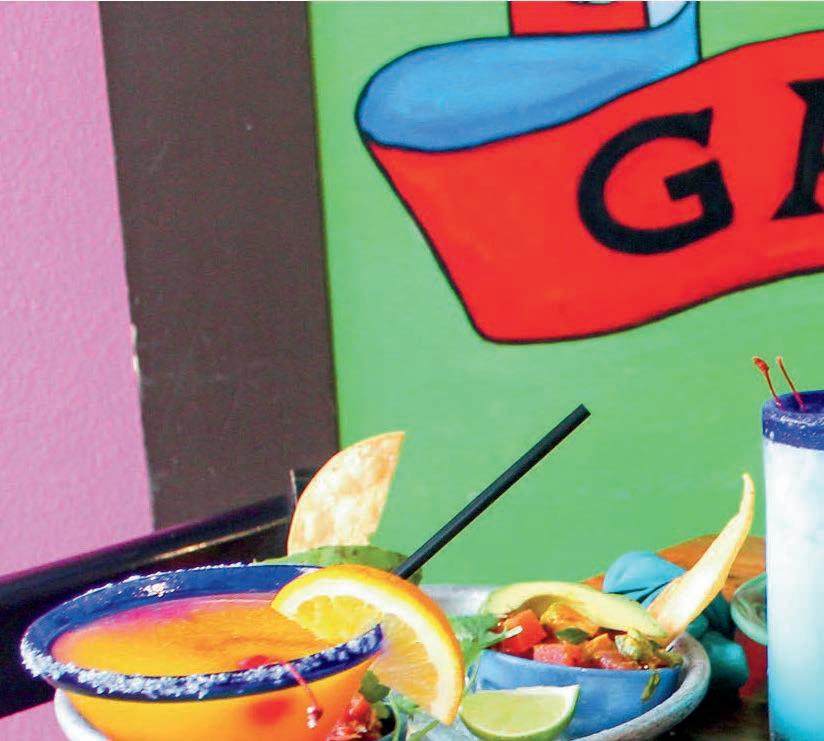




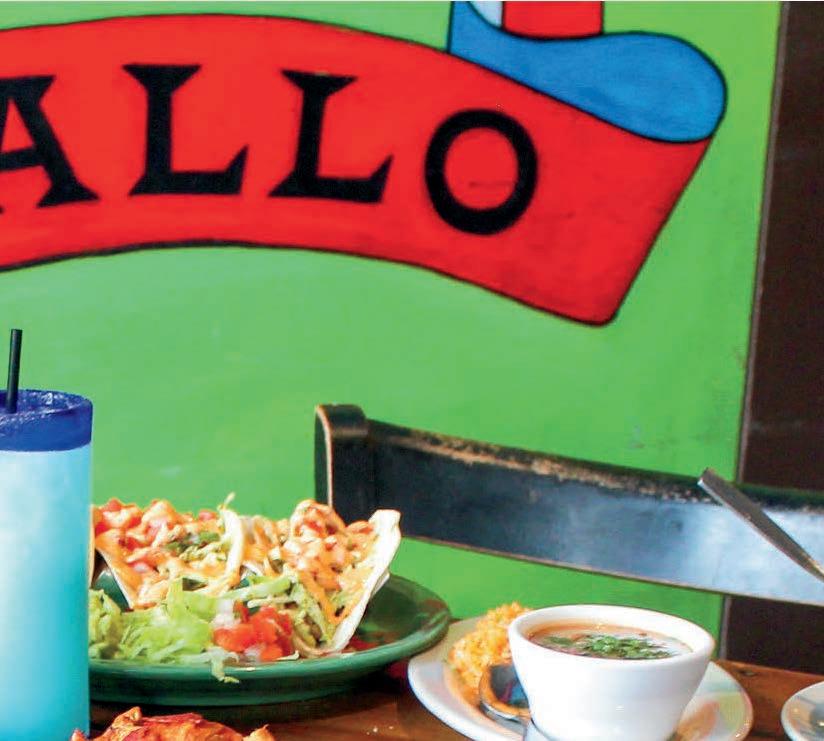















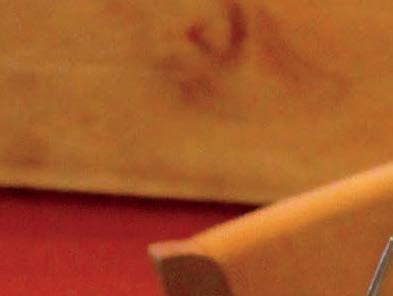










by: Tom Valliere & Charlie Bresenhan









You are enjoying your vacation in historic Galveston. After a full day of beachcombing, exploring turn-of-century neighborhoods, and perhaps a dolphin or harbor tour, you find yourself shopping in our busy Strand district. You are tired and ready to relax. Sometimes after a day of sightseeing or lounging at the beach, a casual fun place that offers come-as-you-are service and a simple food menu is precisely what you want.
Well, you have found exactly that place.
Occupying a busy corner in the very heart of the Strand is the Playground Patio Bar & Grill. A quiet and cool oasis during the day, the Playground transforms into a lively entertainment venue at night. A few steps up from the sidewalk you traverse their spacious patio to enter the restaurant and bar. It is a very welcoming space. A larger space than you anticipate. Thoughtfully carved out of a historic building and preserving enough of its century-old roots to remind you that this is someplace special and not a suburban strip mall.
History is everywhere in Galveston. You cannot escape it. There are many places where you can enjoy a fantasy visit to another era and imagine living in those long-ago days. I often do that. Enjoying a cold beer and tasty bar food my mind takes me back and I think about those many generations that have come before me and traversed these very spaces. Playground is one of those spots where my imagination wanders.
Of course, that is during a quiet afternoon. At night they transition into a busy nightclub scene with live music and an energetic crowd of fun

seekers.






As I enter it takes a minute for my eyes to adjust from the bright sunlight. There is a large bar area with an ordering station - yes this is counter service as are many places regrettably, but at least it is well marked and the signage gives clear instructions.

The menu is simple and easy to navigate. It has only four sections. Appetizers, hot dogs, hamburgers, and a selection of nachos. It may be more difficult to select your drink as they offer many beer choices and specialty drinks with some surprisingly good values during their weekday happy hours and weekend patio parties.
A glance at the menu reveals rather mundane starters. Some fried onion rings, cheese fries, chips and queso with or without pulled pork, and boneless chicken wings. I skip past that section and land in the specialty hot dogs. I don’t understand why so few restaurants offer hot dogs. They are as American as apple pie and can be delicious if properly prepared and dressed. Playground gets this right! Perhaps the best hot dogs in Galveston, they offer several choices. From a plain classic






beef dog to a fully dressed and loaded “Chico Dog” with sliced tomatoes, chopped onions, bright green sweet relish, banana peppers, zesty dill, mustard & poppy seeds. Not quite “Windy City” but close enough you can pretend the gulf is Lake Michigan. It is my choice every time. Perhaps my Midwestern roots are showing, but I urge you to try it. There are less adventurous toppings including an excellent chili cheese dog. The hot dogs are solo, but you can add fries or onion rings if you wish. I am fussy about my fries and Playground is one of the few that I enjoy. Thin cut and crispy, they always hit the spot for me.
Their next menu section offers an array of burgers with various toppings. I like a simple burger with traditional toppings of lettuce, tomatoes, pickles, and onions. Their classic burger hits all of my high points and is served hot and juicy as I like. Of course, you can get other toppings like their California bacon burger with avocado slices and other things that don’t belong on a burger but many people seem to enjoy. A hangover burger with a fried egg that seems to be popular everywhere but appears an unlikely pairing to me and way too messy to be eaten when not dining alone.


A grilled chicken sandwich and a pulled pork offering complete this section. Unfortunately, my favorite Blue Cheeseburger with grilled onions is nowhere to be found (hint, there is a good one across the street)
Nachos and salads are the next grouping. I am not a fan of nachos, but many people are. I do enjoy them on those occasions when the beer is cold and the day is hot. I confess I have never tried them here. Truthfully it is hard for me to get past their hot dogs and fries, but many people order and enjoy them.
The next section highlights their specialty drinks with a focus on Margaritas. It is reported that the Margarita was invented in Galveston in 1948 by local legend bartender Santos Cruz for Peggy Lee at the historic Balinese Room - but that is another story.
They have an interesting selection of what they call “Fancy Pants Drinks” but what I would classify as tropical beach favorites mixed with fruit


juices and rum along with their version of the always popular Bloody Mary. Their drinks are reasonably priced and are bargains during their happy hours.

This is a family-friendly venue during the day, but it transforms into more of a bar/nightclub scene in the evenings. Popular with locals and tourists alike it is a fun place to spend an evening and even better for an afternoon on their delightful patio. Weekend afternoons bring crowds to their patio to enjoy the live music provided by the ever-popular Mickey Hobbs. It is a wonderful venue to relax and people-watch along the busy Strand.
Friday nights offer free embarrassment if you are bold enough to participate in their karaoke sessions. Actually, the embarrassment is mine as there are some incredibly talented customers who share the microphone.
Saturdays generally bring a live band and dancing. There are games to play, and this is a popular sports venue also.
Located just a block from the cruise ships and with their large patio, this is an excellent place to relax and enjoy time with family and friends without breaking the bank. It is unique for the Strand district and a place you will certainly want to visit.

Handicapped accessible with my usual caveats regarding street parking, high curbs, and uneven pavement in the Strand area.
Mon.,Wed. & Thurs. - 11:00 AM to 8:00 PM (kitchen closes at 7:00 PM) Fri. & Sat. 11:00 AM to 1:45 AM (kitchen closes at 9:00 PM) Sunday 11:00 AM to 9:00 PM (kitchen closes at 7:00 PM) Closed all day Tuesday
Playground Patio Bar & Grill 2325 Strand Galveston, Texas 77550 (409)632-2958 www.playgroundgalveston.com












































































































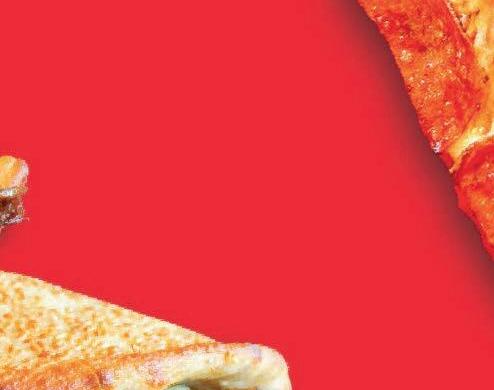






































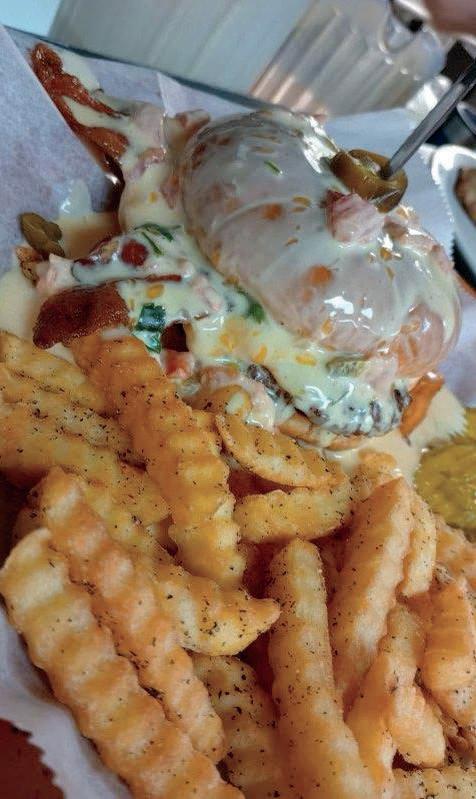

















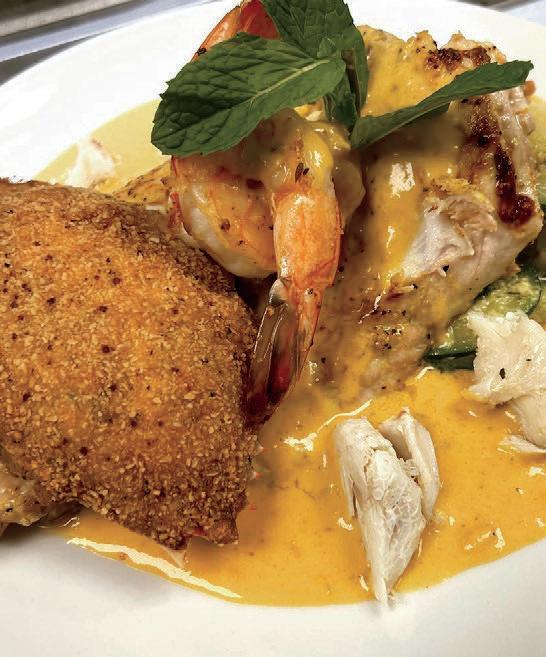

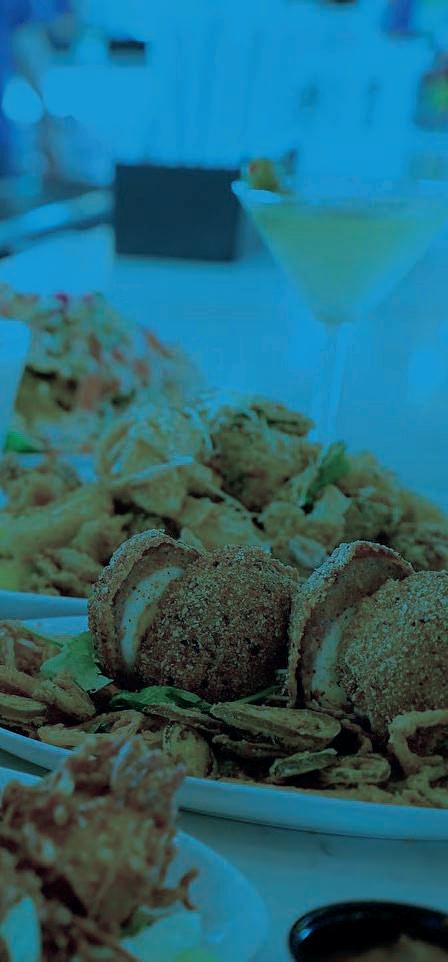



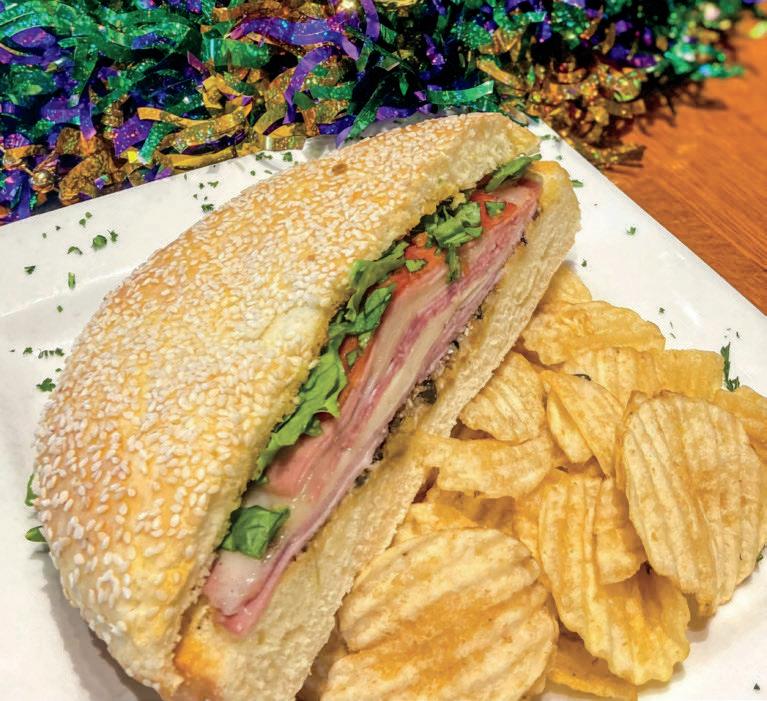

Ham, Genoa Salami, Pepperoni, Mortadella, Provolone Cheese, Shredded Lettuce, and Homemade Olive Tapenade on Our Fresh Baked Muffuletta Bread with Kettle Chips
Mosquito Cafe - 628 14th Street (409) 763-1010


Pork Ribs
Pork ribs cooked with our original rub till almost done then basted with our honey sweetened sauce.
Pennie’s Tex-Mex Takeout 1713 37th Street (409) 765-5719



Warm Goat Cheese Salad (vegetarian)
A crusted medallion of goat cheese atop mixed greens, sun-dried tomatoes, figs, and toasted pine nuts with homemade champagne vinaigrette.
Mosquito Cafe - 628 14th Street (409) 763-1010


“It’s always oyster season at Shucks” Come try our Happy Hour OystersShuckers Choice - East Coast Oysters - $2.50
Shucks Tavern 414 21st St. (409) 444-1700



Elevate your Wednesdays at Saltwater Grill
Join us every Wednesday and indulge in our succulent, hand-cut prime ribserved with house au jus, your choice of mashed potatoes or baked potato, and buttered broccoli. Pair your meal with our 1/2 price select bottles of wine - only on Wednesdays!
Saltwater Grill - 2017 Postoffice Street (409) 762-3474
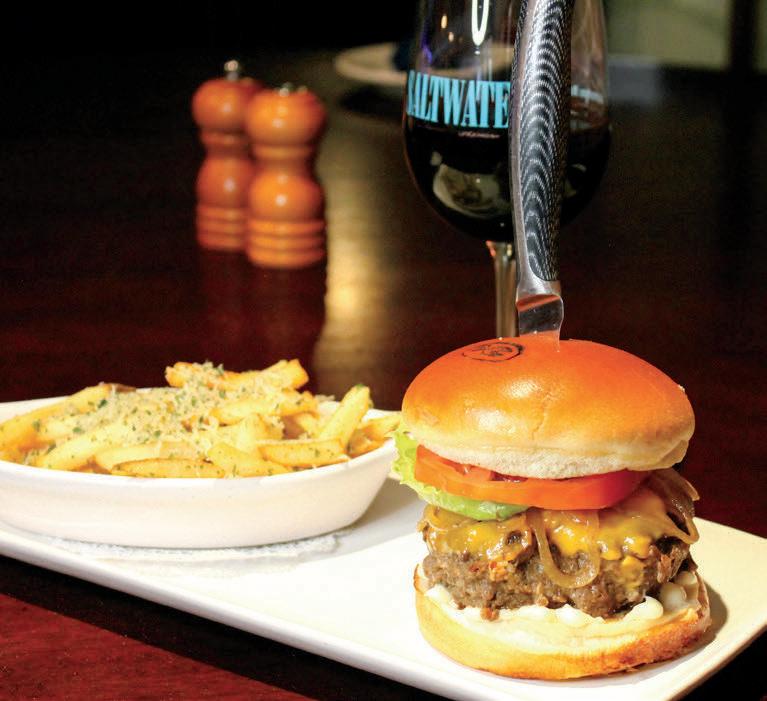

Joey Burger
6oz hand-pressed Wagyu beef burger with smoked cheddar, grilled onions, lettuce, tomato, and mayo. Served with a side of truffle fries.
Saltwater Grill 2017 Postoffice Street (409) 762-3474






Toasted English muffin, arugula, poached eggs, housemade crab cakes, sautéed in butter and covered with our homemade hollandaise sauce. Served with breakfast potatoes and bacon. Only available for Sunday Brunch from 10 am to 2 pm.
Marios Seawall Italian and Pizzeria 628 Seawall Blvd (409) 763-1693


Blackened shrimp served over angel hair pasta, tossed with scampi butter, spinach, tomato, and purple onion.
Shucks Tavern 414 21st St. (409) 444-1700


New! Golden, crispy, and dusted with just the right amount of cinnamon-sugar, our Churro Bites are bite-sized delights that pack big flavor. Each piece is perfectly fried for a light crunch on the outside and a soft, doughy center. Served warm with Salted Caramel drizzle.
Papa’s Pizza 4400 Seawall Blvd (409) 766-7272
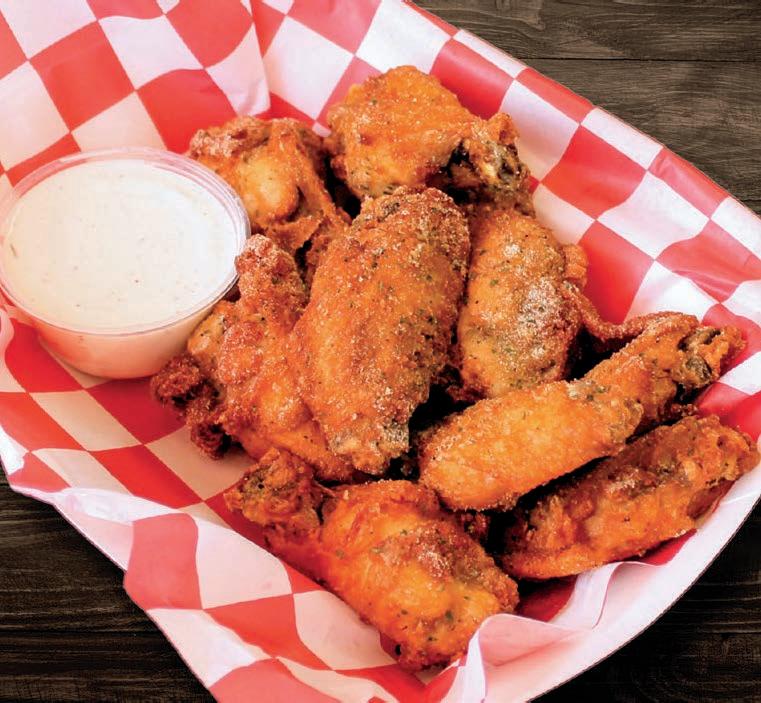

Calling all ranch lovers! Enjoy juicy, crispy chicken wings coated in a flavorful ranch dry rub that delivers tangy, herby goodness without the mess. Each bite is addictive and packed with bold ranch flavor. Don’t forget to add extra ranch dips!
Papa’s Pizza 4400 Seawall Blvd (409) 766-7272



Lemon Herb Seasoned Golden Tilefish Topped With Gulf Blue Crab Sauce On Rockefeller Spinach.
Katie’s Seafood 2000 Wharf Rd (409) 765-5688


Introducing the Bad Hombre! This bold pizza features zesty sauce, melted Jack cheese, spicy chorizo, jalapeños, red onions, and a sprinkle of cilantro. A drizzle of hot honey adds a perfect sweetspicy kick. Are your taste buds ready for the challenge?
Papa’s Pizza 4400 Seawall Blvd (409) 766-7272














































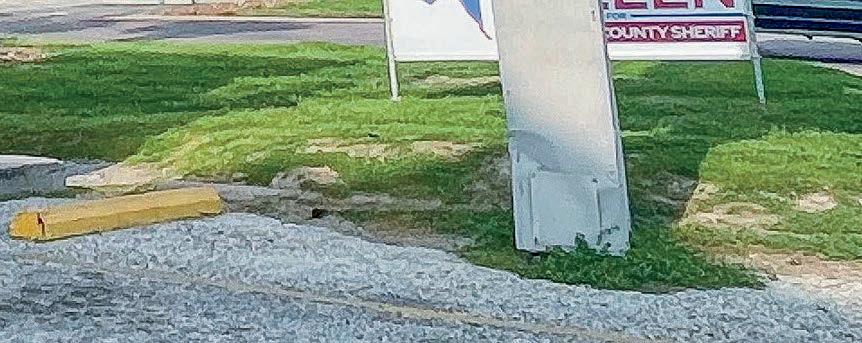




























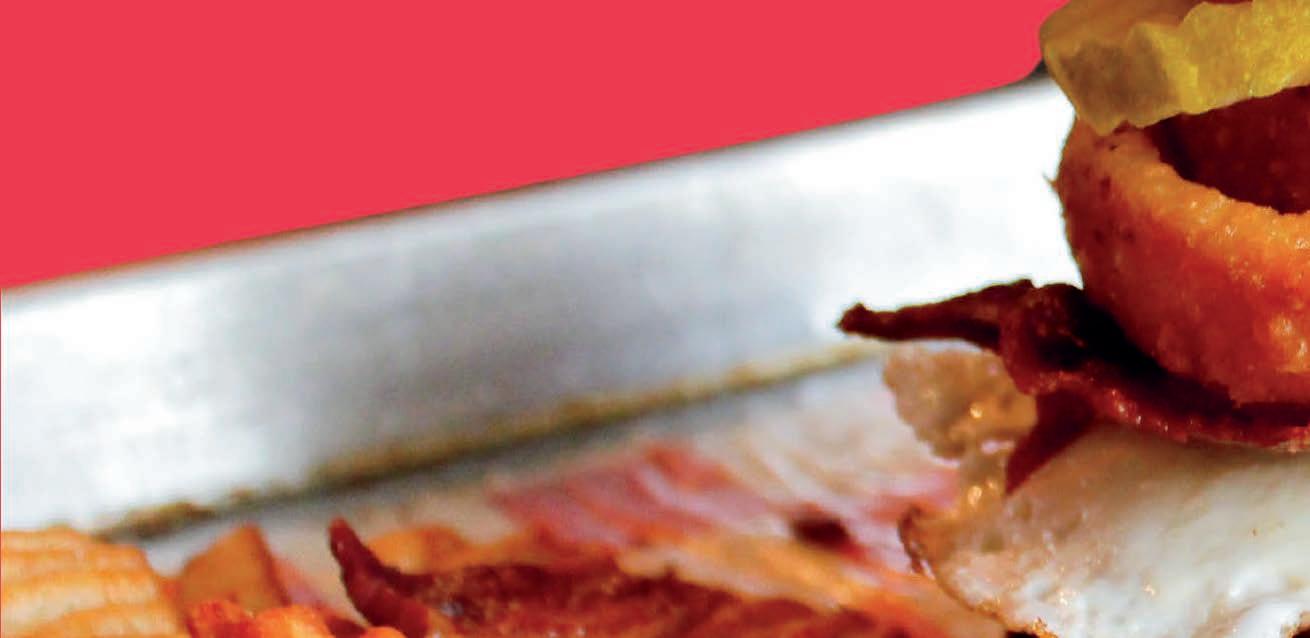


































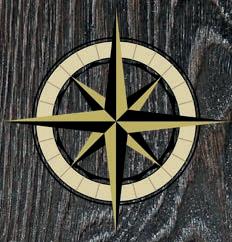

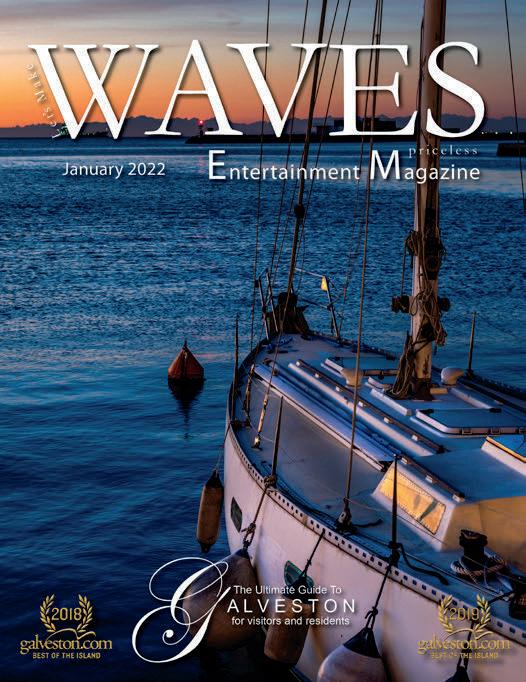













































































































































































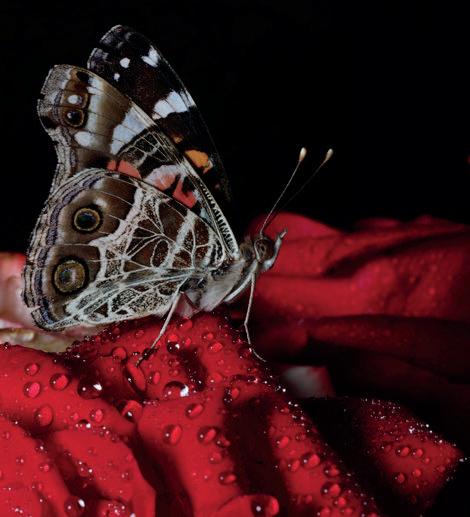









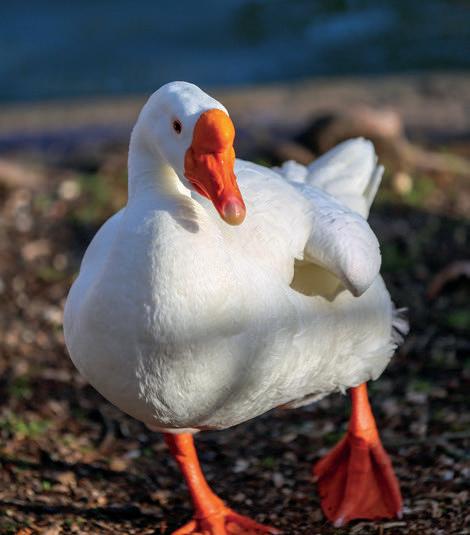









By: Paul Hager


As I’ve mentioned in previous issues, doing research for background on a world premiere theatrical production can be a bit daunting.
Fortunately, as the production team that created THE FURST HOTEL at ETC are all either BOIs or IBCs [If you’re unfamiliar with these acronyms, check them out in Wikipedia], I was fortunate enough to interview the playwrights, the director, and several of the cast members in person, and via Zoom and email.
We begin with a synopsis of the play taken from the theatre’s publicity release: “Frank and Carol Furstein (Pat Daugherty and Robin Lusby) have owned and run The Furst Hotel in Frankenmuth, Michigan for over ten years, but the hotel is now for sale, and they are planning their last Christmas there. A phone call from the snowed-in airport asks Carol and Frank to put up a few stranded travelers until the monster snowstorm passes through. Carol excitedly gets the place in true Christmas style with the help of Tilly (Eli Kelso) and Milly (Ashe Kelso) Heuspach.

The guests are brought to the hotel by Bill Beck (Matt Poole) the airport shuttle bus driver. The guests include Lorena Fenberg, a social media influencer (Ava Moore) and Lance Sulzbach, Lorena’s videographer and fiancé’ (Justin Gonzalez); Branson Breckendorf, a television sportscaster (Alex Petty); Marian Mendel, a librarian (Terri Burchfield); Sandy Kramwinckel, a social climber (Candy Howard) and her jokester husband, Karl Kramwinckel (Cameron Dunbar) and the very strange Baron von Romananov (Kyle Crawford). This unique blend of personalities must find a way to make something out of this detour by revealing a couple of secrets and mysteries that make for great comedy.”

Playwrights Joanne Lopez Rock and Joyce Lopez Mink
Q: What process did your ‘germ of an idea’ go through to become a fulllength two-act play? Where are your characters and situations based on real-life experiences or such things as stories from friends and family?
A: “I asked Joanne to write a Christmas play for my high school students because I have such trouble finding appropriate contemporary plays for that age group. Joanne got the “germ of an idea” from an email ad selling Christmas ornaments. The first draft was too short and needed more characters and conflict. We began adding, editing, and expanding the show over a six month period to two full acts. The characters and situation are purely fictional as we are both island girls and don’t have much experience with snowy venues.”
Q: After Kim gave the green light to produce the world premiere at ETC, what was your involvement in the rehearsal process? How did you feel about seeing the actors bringing your characters to life?
A: “Kim graciously allowed us to attend any rehearsals we chose, and we were able to go to about half of them. The first week of rehearsal, Kim asked us to add a scene that explains why the characters of Karl and Sandy end up at the Furst Hotel. We went home that night and wrote the additional scene which resulted in Karl appearing in a Hawaiian shirt and shorts throughout the show. It was really cool to write the scene and see it happen in rehearsal the next night! It was incredible to see the actors bring the characters and their words to life. Each actor brought unique and special qualities to their characters which made them their own. They took what we thought was funny and raised the bar. The directing, stage managing, set design, sound, and lights all came together wonderfully to breathe life into the show.
Q: How did you feel about the final product on opening night? Do you have any further plans for your play such as having it produced by other venues or getting it published?

A: “Opening night was surreal! Seeing it all come together was so exciting, and the audience’s reaction was extremely gratifying. We plan to send the show out to some publishing companies and possibly seek another venue
for production. Before reaching out to Kim, we realized that most play publishing companies like you to have had the show produced before sending it in for publishing consideration. We are grateful to Kim and Island ETC for providing this opportunity for us to get closer to publishing the show.”
Director Kim Mytelka
“Being the first theatre to produce this show is such an honor. Staging this show with many of your favorite ETC actors makes this very special to me. I do want to be completely transparent so yes, it is true, we have not made it through a rehearsal without every one of us cracking up.”
[All BFFs in my theater-bud family with whom I have worked previously]
Q: Kim certainly assembled an A-list cast of ETC veterans for this world premiere. What was your reaction when Kim asked you to take a role in this show without having to audition?
Kyle Crawford - “I was very excited to be asked to be part of this production. Kim told me briefly about the role and the character sounded like something I definitely wanted to do! It was awesome being back onstage with so many folks who have been a huge part of the ETC history and legacy.”
Cameron Dunbar - “I’ve worked with Kim on shows for 12 years now so I was thrilled to jump into another, especially without auditioning, I hate auditions unless I’m directing.”
Candy Howard - “I actually was shocked when Kim asked me to take a role in this show! I never take being cast lightly and always feel honored to be selected for a show at ETC, and to be cast without an audition was definitely unexpected! It was clear to us - even the first read-through - that she had a vision for this story. And to be a part of her vision was simply amazing!
Q: Did you approach creating your character differently than you do for one in an ‘established’ script?
Crawford - “As far as character approach, it was fun to interpret something in my own way and in a way that had never been done. I was able to try a bunch of different things and was really given the freedom to just be as silly as I wanted during rehearsals.”
Dunbar - “I think there’s more freedom when developing a character in a new show. No one has ever done this role before so there are no expectations. The playwrights were very gracious with letting me add my own spin to a few lines which is always a treasure when working with playwrights in the rehearsal process.”

Howard - “I definitely took a different approach to creating my character in Furst Hotel. Typically there are versions of plays and musicals out there that can be studied, but with a world premiere that luxury didn’t exist. I had to analyze my character quickly to try to come up with a basic framework for Sandy, and then work to refine her at every rehearsal. Some changes came as a result of my character’s relationship with another, and some came about as I worked to find more depth to Sandy.”
Q: How did you feel about the ‘finished product’ you and your fellow actors created?
Crawford - “I was very proud of everything we were able to accomplish in a short amount of time! It was so much fun being able to do that with so many friends! I also was blown away by the audience reception and how almost every show was near sold out!”
Dunbar - “You know, it can be hard in rehearsals, when you’ve been saying the same lines over and over and the poor production staff out in the audience have heard the same material over and over. But then, aha, opening night! There was so much laughter and audience involvement. People sighing at the lovers or gasping at a reveal. An entirely new energy gets added to the show that is hard to explain unless you’ve acted in live theatre before. I think we were all very proud of the show we created together.”
Howard - “I was very proud of our finished product! With only 15 rehearsals changes had to come quickly, but the characters and story continued to evolve throughout the short run of the show. It seemed like we were only just getting settled in and comfortable when it was time to close the show. I think if the run had been longer - say another week or two - we would all have continued to make changes in our characters, and that, of course, would have made changes in the overall storytelling of Furst Hotel. It would be interesting to see the product if the entire cast were to reassemble and recreate the show!”
My husband and I thoroughly enjoyed the closing night performance we attended.

The packed house included a healthy sprinkling of ‘friendlies’ - a term a stand-up comic friend of mine uses to describe audience members familiar with people in the cast - and the non-stop laughter ranged from titters and giggles to downright guffaws. Every player brought depth and nuance to their performance with top honors going to Cameron Dunbar as the sardonically wisecracking Karl Kramwinckel and Kyle Crawford as the stelthily slinking Bella-Lugosie-esque Baron von Romananov. The standing ovation received by the company at curtain call was well deserved.
As a fellow playwright, I wish the Lopez sisters the best of luck in getting THE FURST HOTEL published so it can be produced and enjoyed nationwide.
ISLAND ETC [East-End Theatre Company]
LEAP OF FAITH
Music by Alan Menken Lyrics by Glenn Slater
Book by Janus Cercone and Warren Leight
March 14 - April 12, 2025 - 8:00 PM Sunday matinees - March 23 & 30, 2025 - 2:30 PM https://www.islandetc.org/
THE GRAND 1894 OPERA HOUSE
ITZHAK PERLMAN IN CONCERT
March 2, 2025 - 7:00 PM
MOMIX - ALICE
March 8, 2025 - 8:00 PM
Evil Woman - The American ELO Presents “The Electric Light Orchestra Experience”
March 15, 2025 - 8:00 PM
ROB LANDES - IT’S DELIGHTFUL, IT’S DELICIOUS, IT’S D’PORTER
March 23, 2025 - 4:00 PM http://www.thegrand.com/
COM THEATRE [College of the Mainland Theatre]
THE GRAND 1894 OPERA HOUSE

SWEAT by Lynn Nottage
April 24 – May 11, 2025 - 7:00 PM
Sunday matinees - 2:30 PM
THE UKULELE ORCHESTRA OF GREAT BRITAIN
April 5, 2025 - 8:00 PM
I AM, HE SAID - CELEBRATING NEIL DIAMOND
April 12, 2025 - 8:00 PM
CLEAR CREEK COMMUNITY THEATRE
VANYA AND SONIA AND MASHA AND SPIKE By Christopher Durang
April 18-20, 2025 - 2:00 and 7:00 PM https://clearcreekcommunitytheatre.com/
PURPLE BOX THEATRE
THE CEMETERY CLUB
By Ivan Menchell
April 25 - May 4, 2025 - 7:30 and 2:30 PM http://www.thepurpleboxtheater.com/
BAYTOWN LITTLE THEATRE [BLT]
THE BOLD AND BOB by Jean Ciampi

April 4 - 10, 2025 - @:30 and 8:00 PM https://baytownlittletheater.org/ Paul Hager


Story and Photos by Zach Tate
Additional Photos courtesy Tyson Webb
Tyson Webb loves words. It’s been that way since he was in the 1st grade, according to the 24-year-old Galveston singer/songwriter, when he wrote his first lyrics – an ode to the love of his life at the time – a McDonald’s Big Mac.
“I was always obsessed with words and songs and rhyming. I still have my v ery first poetry book. You can see looking back on it, an undeniable passion coming out on the page,” Webb said.
Born and raised in the Clear Lake / Kemah area, Webb said he gained an a ppreciation for music from many genres and time periods from his parents, who were nearly 20 years apart in age.
“My parents were never really together and they’re very different. As I get older I ’m realizing it was a big part of my development. My mom grew up as a late 80s, early 90s kid so she liked hip hop and grunge whereas my dad liked all the old-school 70’s and early 80’s music. A week at mom’s, a week at dad’s –completely different experiences,” Webb said.



Webb joined the Navy in 2019 and, as the COVID pandemic began, often f ound himself quarantined. Several two-week stints in isolation put a lot of time on his hands and, with a guitar his roommate gave him, Webb says he finally had the time to put his words to music and learn to play the guitar.
“I was in a training school in Florida and it was two weeks alone in a room if y ou or your roommate showed any signs of being sick. I had a lot of time to learn.”
Though relatively new to the Texas singer-songwriter scene, Webb is finding s uccess performing live in Galveston at places like Hotel Lucine, Sharky’s, and 1877 On The Strand as well as in Houston at Dan Electro’s performing solo, with his band Outlaw Boogie, or as a duo with his good friend Chris Lauer accompanying him on Trumpet. Webb was also a featured guest on Hank Lamb’s radio show on KPFT 90.1 FM (89.5 FM in Galveston), the region’s last remaining broadcast radio station to give airplay to independent artists.

Webb also has several self-produced songs on Spotify but is currently spending time in Austin investigating recording options. In keeping with his claim that all his songs are “true stories” Webb reflected on a Bob Dylan quote that reminded him to write as much as he could when while he was still in his 20s.
“Bob Dylan said all his favorite songs he had written were from his early 20s. T hat’s where he felt like he was most true in his songs. Everything was fresh and coming from his soul. I decided to not worry about what kind of songs I’m writing and just write whatever is coming naturally. They’ve all been very personal to this point,” Webb said.

Q&A with Tyson Webb
ZT: How do you describe yourself as a musician?
TW : I’m a small-time, genuine Texas songwriter. The music I play is somewhere between outlaw and boogie. And they’re all true stories.
Z T: Why do you play/write/perform music?
TW : It allows me to be free and express myself. I never was too big a fan of routine… music allows me to meet new friends and see new places all the time, and that’s when I’m at my happiest.
ZT: What is your earliest memory of being inspired by music?

TW : As a kid, I was always into music. I was always able to remember the lyrics to every song I liked, which led to me singing my favorite songs in the shower, car and in class.

I absolutely love Galveston. When I’m traveling, I tell everyone that they need to get out to Galveston and check it out. When I was just starting out, I was able to pick up many gigs in Galveston just because that’s the type of place it is. They take care of their own.


ZT: What artists did you love growing up and why?
TW : Townes Van Zandt, Steve Earle, & Guy Clark. From listening to their Live At The Bluebird record while on Texas hill country road trips with my dad. Waylon, Willie, Hank Jr., Cross Canadian Ragweed, saw them at the rodeo as a little kid, Stevie Ray Vaughn because he’s my dad’s absolute favorite. Lil Wayne was a big one for me because of his lyrics and wordplay. I went through a big Metallica phase. I especially liked their instrumentals because of the harmonies and the ambient vibes.
ZT: Where was the first place you ever performed in front of people?


TW : I believe it was Soulfreak coffee shop in Clear Lake Shores. They used to have an open mic night there.
Z T: Who influences you these days and why?
TW : Friends, family, and the Texas legends. I take advice from everyone in my life as I walk the path of all who’ve came before me.
Z T: What defines ‘good music’ in your opinion?

TW : True music! I had a realization not too long ago, that the only absolute unique thing we can provide for people is our true spirit. Good music doesn’t fit in a box, it’s true, raw, and gives you a little escape from the cruel cold world
Z T: What is your songwriting process?



it is. They take care of their own. And Houston has been great to me as well. The scene out here is full of some of the most humble folks out there.
Z T: What is your musical goal for 2025?
TW : I don’t rush it. I’ll wait until an idea comes my way, jot it down, and wait some more until all the blanks get filled in. My notes app is full of one-liners that God sends my way, usually in the late hours of the night
Z T: How do you define success as would relate to being a musician?

Z T: How often do you perform live?


TW : Whatever floats your boat! There are so many different ways of successfully doing this job, I think it’s mostly about finding what makes you happy and sticking with that. For me, that means traveling and meeting all the great folks and places.




TW : In 2024 you could catch me playing music near the strand in Galveston almost every night. In 2025, I’m redirecting my focus towards recording my original music and traveling. Which will mean fewer gigs, but more songs out there for people to enjoy.

ZT: What is your opinion of the Galveston and Houston music scenes?
TW : I absolutely love it. When I’m traveling, I tell everyone that they need to get out to Galveston and check it out. When I was just starting out, I was able to pick up many gigs in Galveston just because that’s the type of place
TW : Record, record, record! I’ve been writing for some time now just to play the songs live. It’s time to get these songs out there, and I’m so excited about it.
Z T: Where is the best place for people to find out where you’re playing next?
TW : I’m most active on Instagram @tysonwebbtx And Facebook: Tyson Webbs Outlaw Boogie


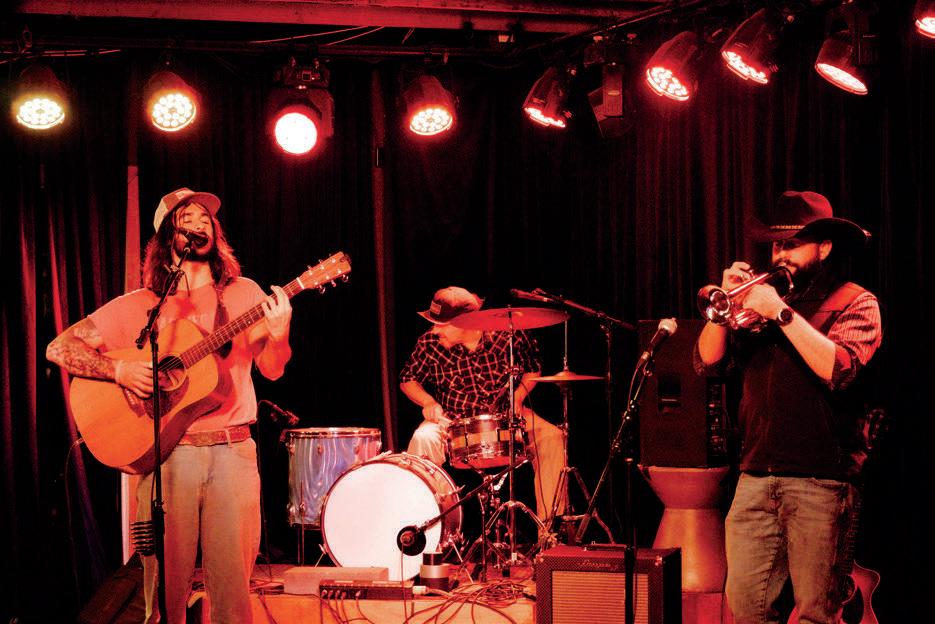


















One of the prime offshore baits that red snapper, ling, kingfish, etc. fishermen are having to pay a much higher price for these days is the cigarfish. They’re around, but anywhere from $25 to $30 for a 5# box. The alternate choice is Spanish sardines. They are readily available at about $15 to $20 for a 5# box.
The ones I’ve been using are shiny, fat, and about 6 to 6 1/2 inches long. There are drawbacks as well as several advantages besides the price. The drawbacks are that they get very soft after they’ve been thawed a while and whatever hits them can get the bait off the hook pretty easily. I’ll explain how to rig them to give you a better chance at a hookup instead of another lost bait. The sardine’s advantages are that they’re big, shiny, and soft. That soft flesh can be used to your advantage. Proper rigging allows you to hide the hook deeper in the body of the bait and still get a solid hookset.
I rig Spanish sardines several ways but the two that I use the most are with the hook in the head or near the tail. See the illustration for a clear look at what I’m about to describe. Let’s look at the upper bait; I run the mono leader through the right eye socket pulling it out the left side about six inches. With my left thumb and forefinger, I pinch the mono against both sides of the body just behind the eye sockets. Next pass the mono around the upper side of the head and through the eye sockets two more times, working forward with each wrap. When this is completed, place the hook in the mid-body or farther back. With the hook in place, adjust the length as needed to give a little slack in the mono from the hook to the sardine’s eye socket.

Here’s a hint that’s not in the drawing: when using Spanish sardines with a wire leader for wahoo or kingfish, pass the hook and leader through the bait’s mouth and out the gill plate. Insert the hook in the sardine’s body from the bottom, laying the hook shank parallel to the bait’s belly. When rigged this way, the hook is taking the pull as the line is played out. Since the sardine’s spine moves easier from side to side than it does up and down, the vertical hook placement results in less bending of the bait’s body, making it spin less. This makes the bait look more natural and the rearward hook placement will make for better hooksets on “tail-biters”.

Then pull the three wraps snugly around the bait’s head. When done properly, the wraps absorb the pull instead of the hook, this allows the bait to lay straight and look natural as you let the line out. The hook is closer to the outer end of the sardine for an increased hookup probability. Those snug wraps through the eye sockets also help to hold these soft baits together for a possible second strike if the first one misses.


The bottom drawings illustrate what I call “tail-knot rigging” on a cigarfish and whole squid. This places the hook at the head of the bait, making a head-first swallow and hookup more probable. Make the knot as drawn and it will untie itself without kinking or breaking when the line comes tight. Don’t forget to leave a little slack in the mono from the tail knot to the hook for the same reasons as in the Spanish sardine rig. This rigging works best on 50 to 125-pound mono, depending on its stiffness. Make the knot as shown, looping and tightening around the base of the bait’s tail with the hook at the bait’s head. This application works very well with relatively soft Spanish sardines but also will work with any soft-tailed bait such as sand trout, croakers, piggies, and the illustrated whole squid. On the whole 5-7” squid, I run the hook and leader through the body from its outer end and hook through the head between its eyes.
Using Spanish sardines is a matter of adapting to what you have to work with.
Try these rigging methods and I’m sure you’ll be satisfied with the results. With attention to detail and a little practice, you’ll be surprised at the ease of tying these rigs as well as the positive results.

Rigging soft baits such as Spanish sardines through the head only, like you would the firmer cigarfish will result in fewer hookups. Allowing the snapper or kingfish to bite the tail off and come back for a second strike on the head section of the bait won’t work as well with Spanish sardines since they tend to pull off the hook more easily. These sardines when only hooked through the head need to be “fed” to the predator fish longer on a virtually slack line. If you don’t, they will just pull the bait off with no hookup.



Chris Gonzales
Owner - Serious Tackle



• Baits/Lures
• Custom Rods
• In-House Rod/ Reel Repair
• Reel Parts • Rod Components • Inshore/Offshore Tackle • Custom Rigging • Custom Splicing



Ingredients
Pork Belly Tostadas
Yield: 10-12 servings
Prep time: 30 minutes
Total time: 3-4 hours
Pork belly - 2-4 lbs.
lard - enough to cover tortillas in pan
lime juice - 1 tsp (for avocado spread)
cumin to taste
2 avocados mashed and seasoned to taste
cilantro - chopped
Corn Tortillas
Duck Fat Spray
TSS Tomatillo Avocado
Salsa
Mixed Peppercorns fresh ground






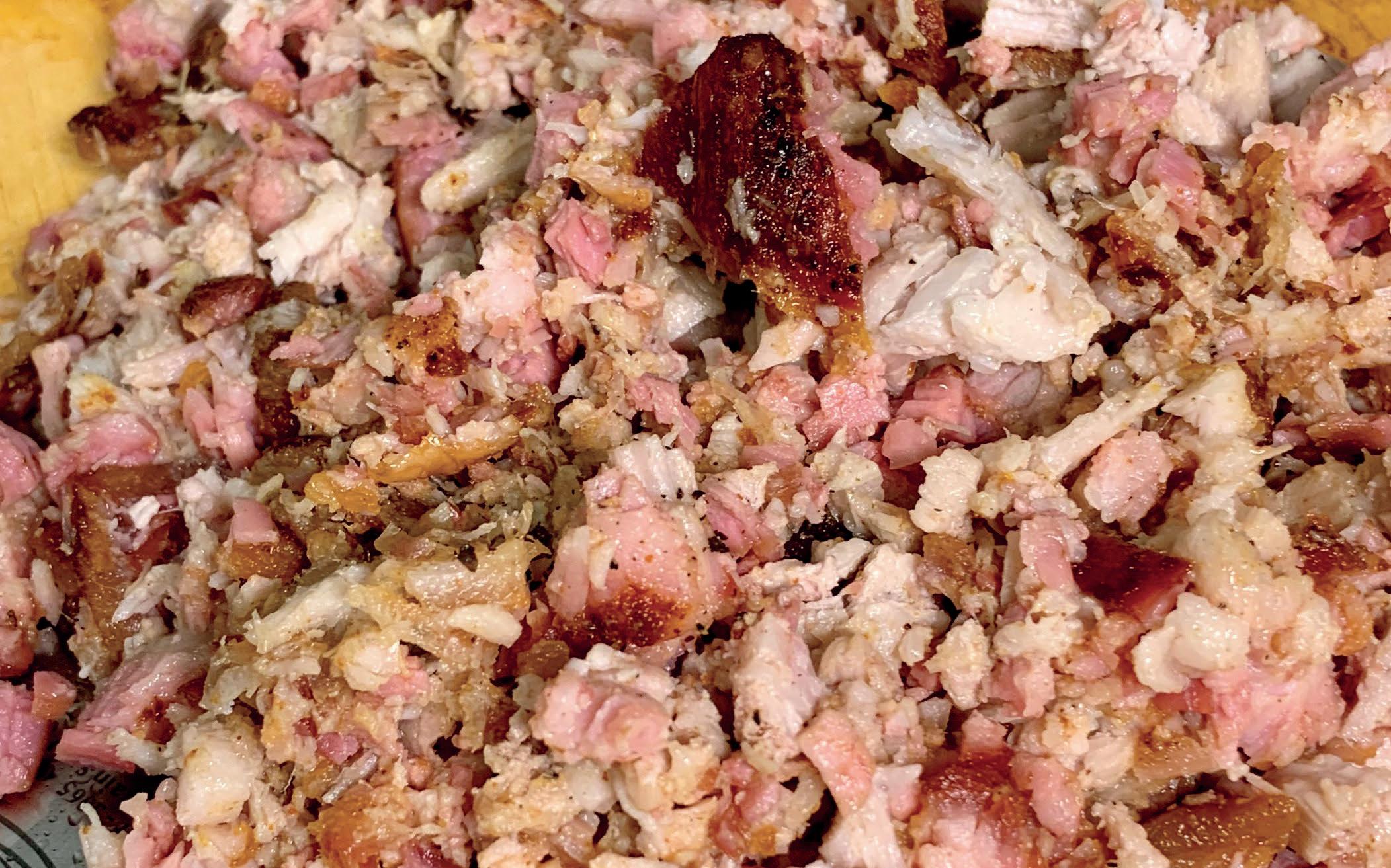
TSS Jalapeno Garlic Salt

For this recipe, I used a Camp Chef SG grill that features a “slide” option to expose the flames for additional heat. However, you can use any pellet or charcoal grill.
Directions: Start by washing and drying the pork belly while leaving it whole. Score the fat side into four equal sections for reference after grilling. Spray duck fat on the fat side and season it with sea salt. Then, flip the pork belly over, spray duck fat on the meat side, and season it with a base layer of TSS Jalapeno Garlic Salt. Add a light sprinkle of cumin and finish with fresh ground mixed peppercorns to taste.
reaching an internal temperature between 201 and 205 degrees.
After cooking, remove the pork belly from the grill, unwrap it, and allow it to cool. Using the scored lines as a guide, cut the pork belly into four pieces. Heat lard in a skillet and quickly fry the fat side of each piece. Set the fried pork belly aside while you fry the tortillas.
Next, chop the pork belly and mix it together. Spread avocado on each tostada, then add a generous amount of chopped pork belly followed by the tomatillo salsa. Finish by topping with chopped cilantro.

Line the top rack of the grill with nonstick foil, folding the edges up to catch any excess grease, or place the pork belly on a shallow baking pan. Grill at HIGH heat until the internal temperature reaches 170-180 degrees Fahrenheit. Once reached, remove the pork belly and wrap it in either foil or peach butcher paper. Return it to the grill on the top rack and continue cooking until it becomes tender,
Note: The pork belly can be chopped and used without frying after grilling; however, frying adds extra crunch and flavor. You can vary the toppings to create a Tex-Mex style by adding lettuce, tomato, and grated cheese.
Bill” & Barbara Powell





Happy March and St. Patrick’s Day, Wavers! 1975 and Saturday Night Live 50 Year Anniversary
Hi there, Wavers. Your Bum just finished watching the SNL 50th anniversary live broadcast. I was very entertained by seeing what the show looked like 50 years ago. Your Bum wasn’t around in 1975.
I had a random thought the other day while I was out riding around in my ol’ scarab. It’s not like me to have many thoughts in a day, but here is what had me thinking:
What was life like in 1975? What was happening during that time? What did things cost? So, I did a little research, and here are some interesting details I discovered…









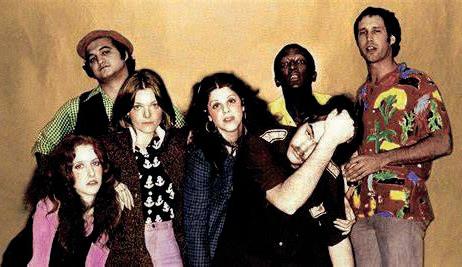
Saturday Night Live Original 1975 Cast: Many people claim it’s the best cast ever. The Not Ready For Prime Time Players were Gilda Radner, Dan Aykroyd, Chevy Chase, Garrett Morris, Jane Curtin, John Belushi, and Laraine Newman.








































































































On Sunday, February 16th, NBC aired the 50th Anniversary Special for Saturday Night Live. The special entertainment telecast attracted over 14.8 million viewers. It was NBC’s biggest prime-time entertainment rating since 2020.
Most of the country got to view the entire broadcast. Unfortunately, those of us who were watching on KPRC Channel 2 did not get to. Inexplicably, KPRC did not broadcast the last 13 minutes of the program. They cut away from it and went to their local news program so we wouldn’t miss out on who was shot or robbed in Houston that day.

What a horrible error! Here is what the general manager of KPRC had to say about this broadcast nightmare:
“ We sincerely apologize for cutting the SNL special short. This was not an intentional programming decision; it was simply human error, and we understand your disappointment. ”
Oh, you understand our disappointment, do you? We don’t think that you do. We watched for over 3 hours and then you absolutely dropped the ball. We totally missed out on seeing Paul McCartney sing a medley of three songs from the Beatles’ Abbey Road album. We missed the on-stage goodbye led by Martin Short, which included former cast members holding up a photo of the beloved Gilder Radner.
and still messed everything up. The general manager commented that when the show ran late their technical team didn’t make the real-time adjustments, and that is why the final 13 minutes were missed.
Seriously, that is your explanation? Then KPRC goes on to add insult to injury and say that they value these special moments in television history as much as we do. Obviously, you don’t!
Do we like it when incompetence ruins a terrific, historic broadcast?


To make matters even worse, KPRC admitted that NBC had communicated with them two days before the program aired live, that the show would run long. They were given advance notice

NO! WE DON’T LIKE THAT!


NOTE : As of our Waves press time, KRPC was still reaching out to NBC asking if they could present an encore presentation. We will keep you posted.
















Container gardening is very popular for many reasons. Containers look beautiful on your deck, patio, or within a garden bed. Container gardening also provides you with the ability to grow plants that wouldn’t be viable in your climate- provided you move them inside when it gets cold.
As we talked about previously (see February 2025 issue - page 72 ), just about anything can be a container for a container garden. So long as the container allows drainage, it will work.

One factor, however, is very specific- soil.
Soil is the basis of everything having to do with plants. There are plants that don’t give a flying fig about the soil, many of those plants are herbs, but even those do better with good soil.


Good soil is soil that is full of organic matter, retains enough moisture but drains well, and has plenty of nutrients. If your soil is full of organic matter, the nutrients will take care of themselves for the most part.
When it comes to getting the soil for your container, it is best and easiest to purchase a really good organic potting mix. Container gardens have unique needs due to the fact that the plants cannot connect with the soil web outside of their pots. Therefore, topsoil is not a good option. You need a mixture of organic matter, topsoil, and other ingredients that allow drainage while maintaining moisture.








There are a few plants that need even more specialized soil. Rosemary and Lavender need potting soil designed for succulents. Their roots will not tolerate being wet. Succulents and Cacti make great container choices, as well. If you think about



where a plant originated, it will help you understand its specific needs. Rosemary and Lavender originate in the Mediterranean and like poor soil that drains quickly.










by: John & Kathy Valastro

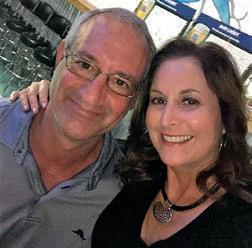
I love this time of year. Funny how a rise in temperature from 40 degrees to 70 can feel so refreshing. After a confusing winter, spring brings a welcome change—a new energy, a fresh start, and a reminder of the beauty that surrounds us.
My island friends, this reflection is short but meaningful. It’s something important to me, and I hope it resonates with you as well. It’s all in the title: “Island Friends.”

Kathy and I have been here for 7 years, and in that time, the number of people we consider friends has grown exponentially. We wouldn’t dare try to name them all—we wouldn’t want to leave anyone out. But the truth is, it wouldn’t matter, because islanders aren’t that way. Friendships here aren’t about recognition; they aren’t about status or gain. They’re simply about being there for one another.
I truly believe our island friends would give you the shirt off their backs if needed. More importantly, if I picked up the phone and called for help, they would be there in a heartbeat—no questions asked.
There’s no status required to be among island friends. Our circle includes musicians, restaurant managers, shop owners, bar owners, waiters, retirees, and a few who are still working into their golden years. They are BOIs (Born on the Island), IBCs (Islanders by Choice), recurring visitors, snowbirds, and even a few from other countries. They are young and old and everything in between. We may not always agree on politics or social issues, but we can agree to disagree and still treat each other with dignity and respect.
I have to admit, as we all experience the pressures of life and work, it’s easy to become jaded. Too often, people can be judgmental, vindictive, or pretentious, using friendships as stepping stones for personal gain. It’s enough to make anyone guarded.
But island friendships? They are different. They are a rebirth —a re-

minder of the goodness in people. Over the past few years, Kathy and I have rediscovered what true friendships should be, and we are grateful.
So, if you’ve been keeping your guard up, hesitant to let people in, afraid of being hurt or taken advantage of—consider giving island friendships a chance. Slowly but surely, you’ll see what I’m talking about. There are so many good people here, just waiting to be a friend. We took that chance, and we are better people for it.
It’s kind of like the change in seasons. Just as a change in temperature can be refreshing, so can opening yourself up to new friendships.
Hope to see you around… friend!















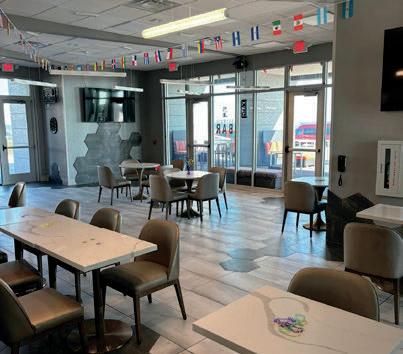





Merry March, my friends! Bunny has been spending a lot of time lately hopping down “Memory Lane”. I remember fondly some of the greatest dishes created by some very fine “church ladies” from the church where I grew up. I must admit...no one can put out a greater spread of homemade food like a Southern church group. During those potluck suppers and dinners on the grounds (as we termed it), you knew everyone would be bringing their best homemade fare. The delicious casseroles would be plentiful, the layer cakes would be towering, and the deviled eggs couldn’t be any more ‘devilicious’.
So Bunny has a few of these retro dishes to share with you this month. These are some favorites of mine from dear ladies that I remember so vividly. With these classics, get ready to pass the plate!
Looking for a hearty casserole that won’t break the bank? Check out this yummy one that Ms. Bessie always brought for church dinners. It’s budget-friendly (hence the name) and you probably already have the ingredients on hand.
Ingredients
• 1 1/2 lbs. ground beef
• 8 oz wide egg noodles (or preferred pasta)
• 1 medium onion, diced
• 2-3 garlic cloves, minced
• 2 15 oz. cans tomato sauce
• 1 cup sour cream
• 1 8 oz. pkg. cream cheese softened


• 2 cups shredded mozzarella or cheddar cheese
• 1 tbsp Italian seasoning
• Salt and pepper to taste
Instructions
Preheat the oven to 350°F and grease a 9×13-inch baking dish. C ook the pasta according to package instructions. Drain and set aside. In a skillet, brown the ground beef over medium heat and drain off the grease. Put cooked meat back in the skillet, add the onion and garlic, cooking until fragrant. Stir in tomato sauce, Italian seasoning, salt, and pepper. Simmer for 5 minutes. In a bowl, use a mixer to mix sour cream with cream cheese until smooth.

Layer the casserole:
Spread half the pasta in the baking dish. Top with half the meat sauce, then half the sour cream mixture, and a layer of shredded cheese. Repeat the layers, finishing with cheese on top. Bake for 2530 minutes, or until the cheese is melted and bubbly. Remove from the oven and let the casserole rest for 5-10 minutes before serving.
Bobbie Jean’s Bohemian Cake
Bobbie Jean was famous for this cake. Easy to make, it’s a crowdpleaser! Miss Bobbie was always ready to make and take one to anyone who had lost a loved one, or to friends who were ill, or recovering from surgeries. What a sweet lady!
Ingredients
• 1 cup vegetable or canola oil
• 1 cup brown sugar
• 1 cup sugar
• 1 cup buttermilk
• 2 eggs
• 1 tsp. vanilla
• 2 1/2 cups flour
• 1 tsp. salt
• 1 tsp. cinnamon
• 1 cup coconut
• 1 cup chopped pecans


Instructions
With a mixer, mix the first 6 ingredients together until well-blended. Then combine flour, salt, and soda together in a smaller bowl and add gradually to the wet ingredients until completely combined. Fold in the coconut and pecans until mixed well. Pour batter into a well-greased Bundt or tube pan and bake at 350 degrees for 45 mins to 1 hour. Use a skewer or clean knife to check for doneness. Let cool completely before spreading on the icing.
Icing
• 1 8 oz. pkg cream cheese
• 1 stick or 1/2 cup butter
• approximately 3 cups powdered sugar
• 2 tsp. vanilla
• 1 cup chopped pecans
Mix well with a mixer until it reaches a spreading consistency. Spread over entire cake after the cake has cooled.
You might not think of a side dish like green beans as being addictive - until you taste these! I promise you won’t be able to stop eating these.
Ingredients
• 5 (8-ounce) cans of green beans, drained
• 12 slices of bacon, chopped and cooked until crisp
• 2/3 cup brown sugar
• 1/4 cup melted butter
• 7 teaspoons soy sauce
• 1 1/2 teaspoons garlic powder or 2 cloves garlic, minced
Instructions

Set your oven to 350. In a 9×13-inch baking dish, lay out the drained green beans. Evenly distribute the crispy bacon on top. In a small bowl, mix together the brown sugar, melted butter, soy sauce, and garlic powder until well combined. Drizzle the flavor mix over the green beans and bacon. Toss gently to ensure all the beans are coated. Transfer the dish to the oven and bake for 40 minutes. Stir the beans halfway through to ensure even cooking and flavor distribution.
Once done, the green beans should have a shiny, sticky glaze. Stir once more before serving to coat them in any remaining sauce in the dish.



























































































































































































































































































































































































